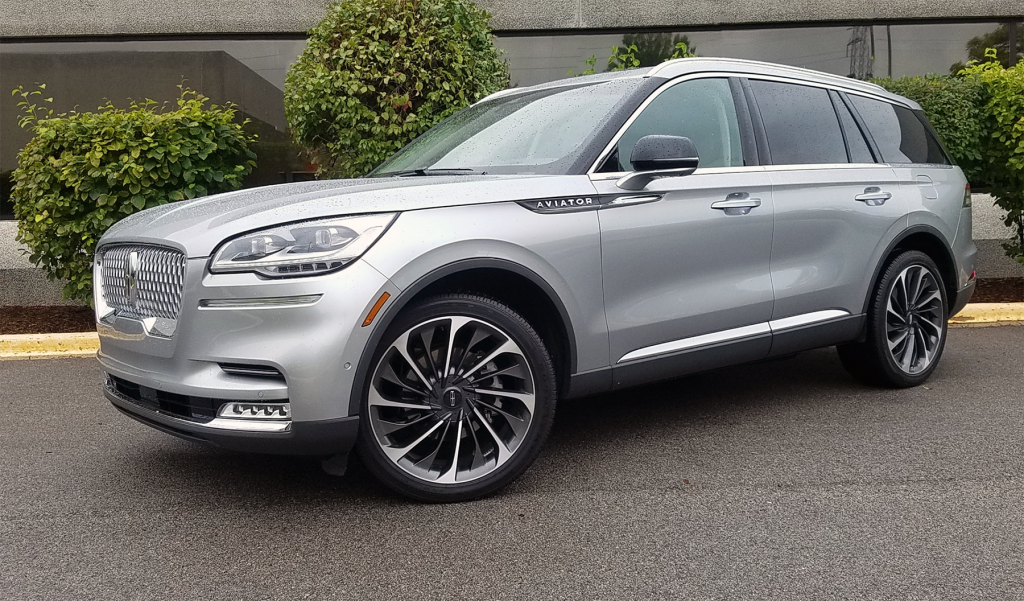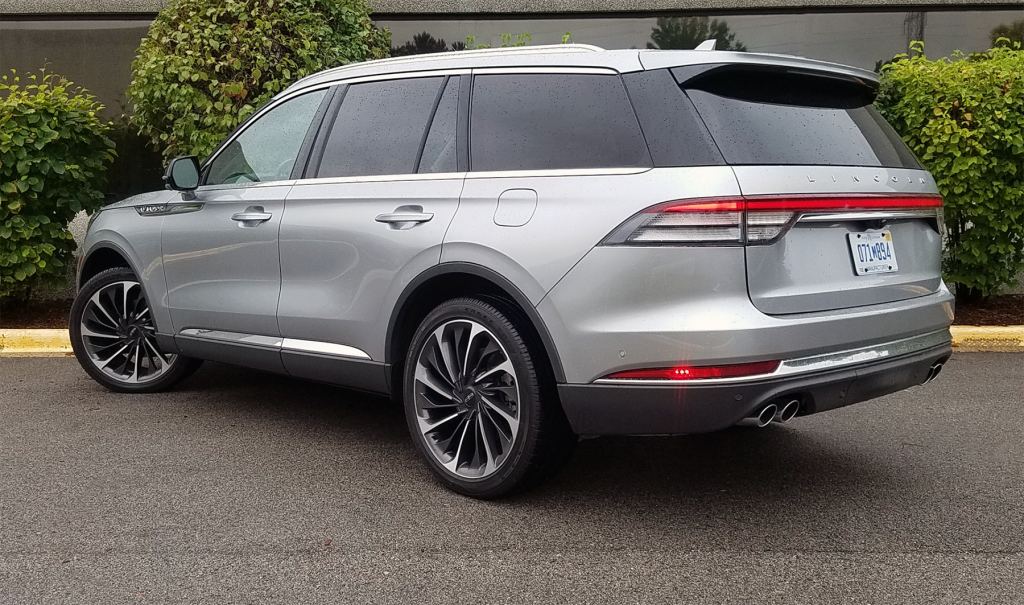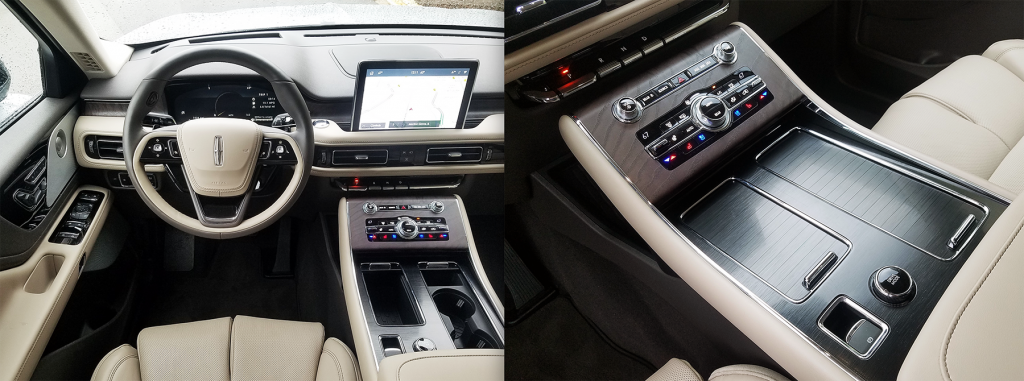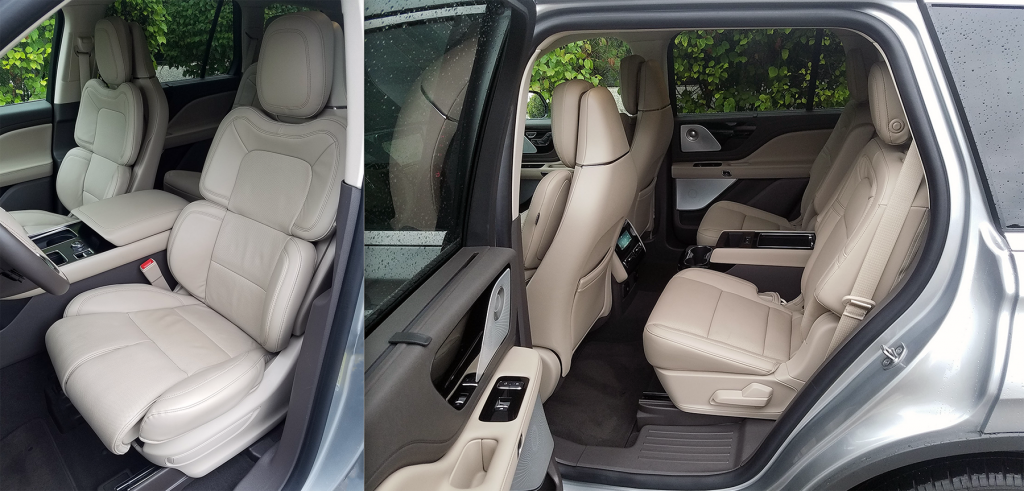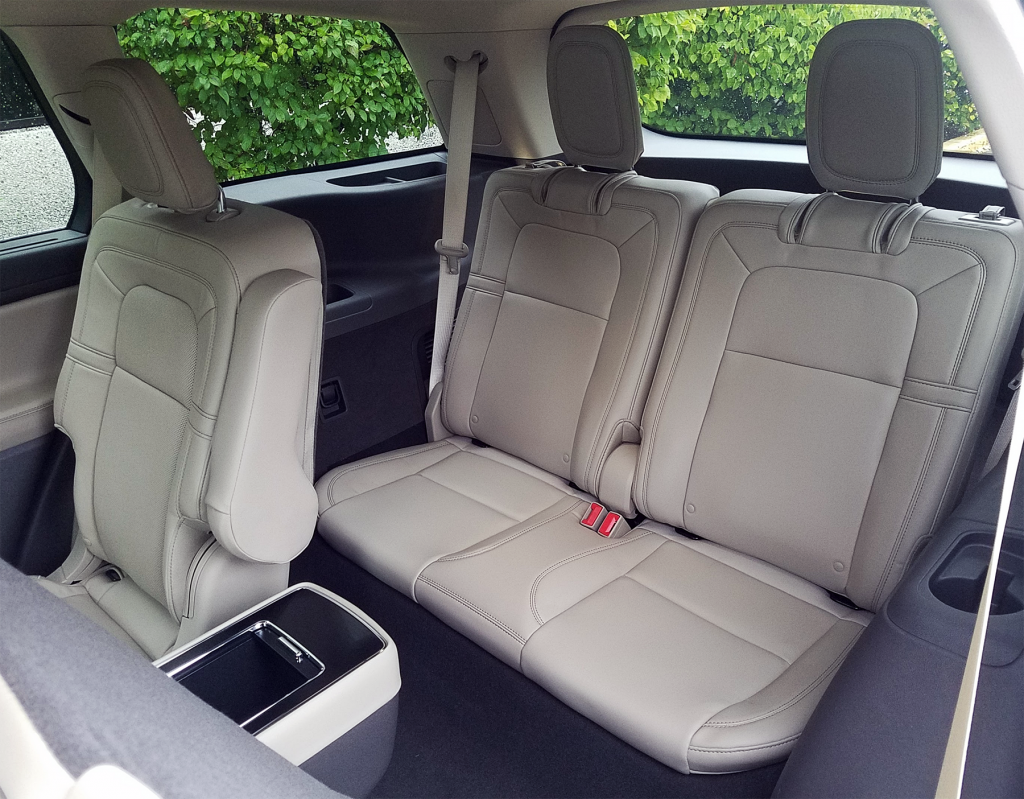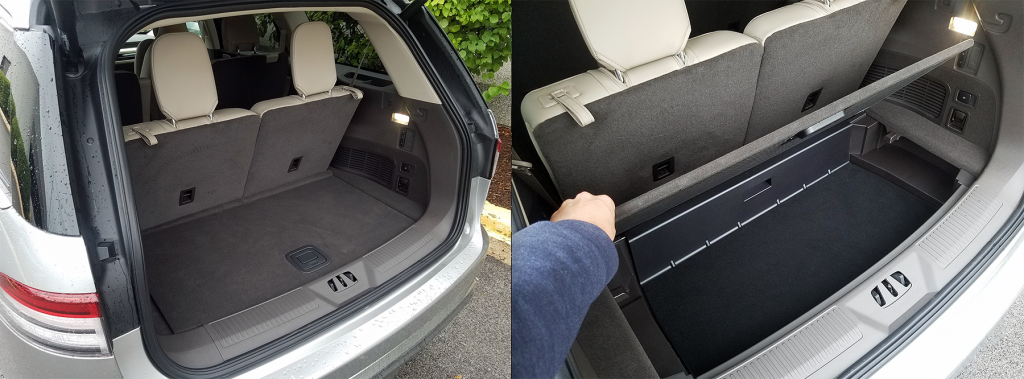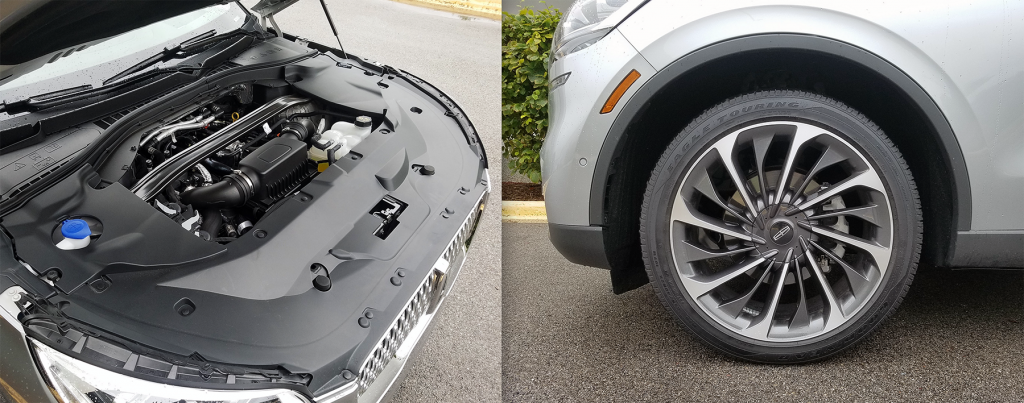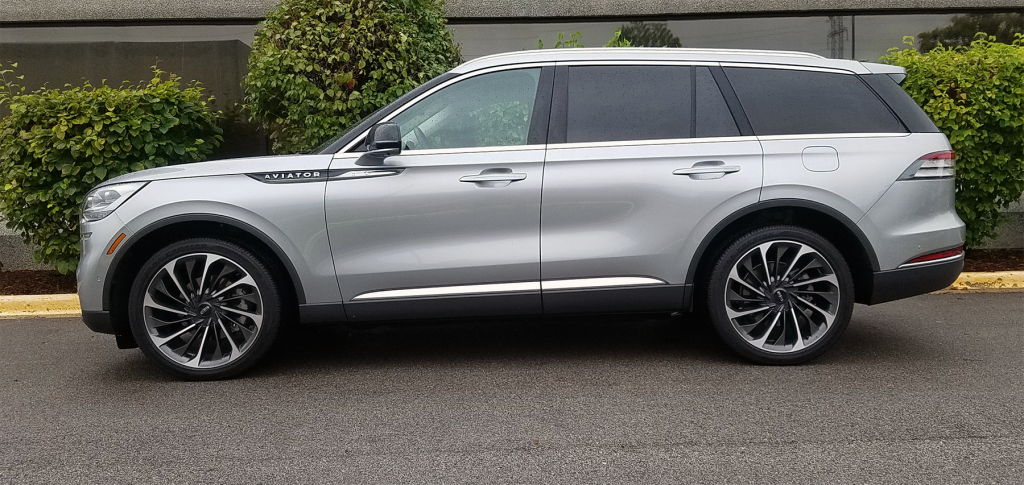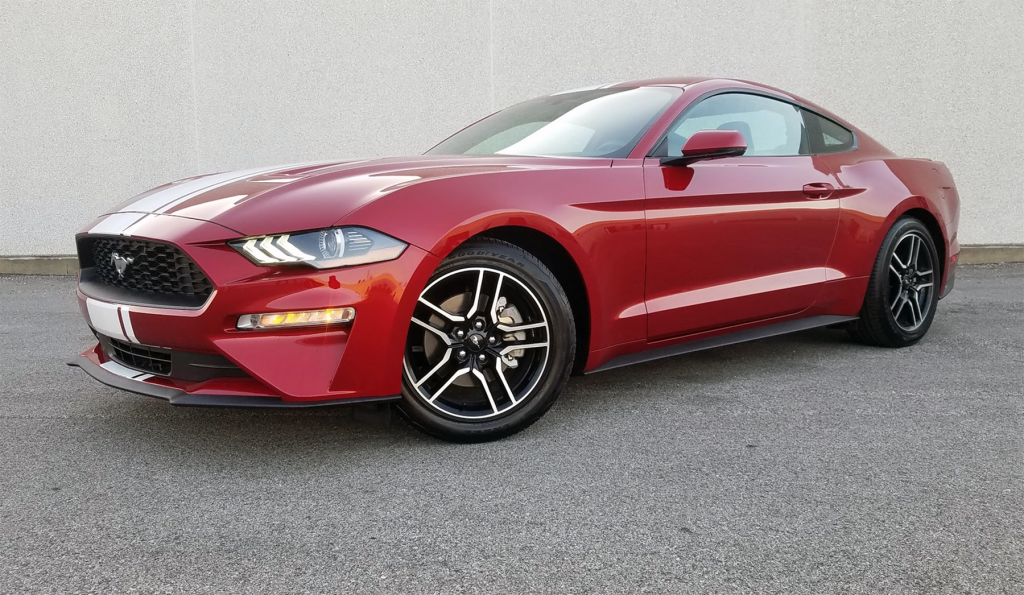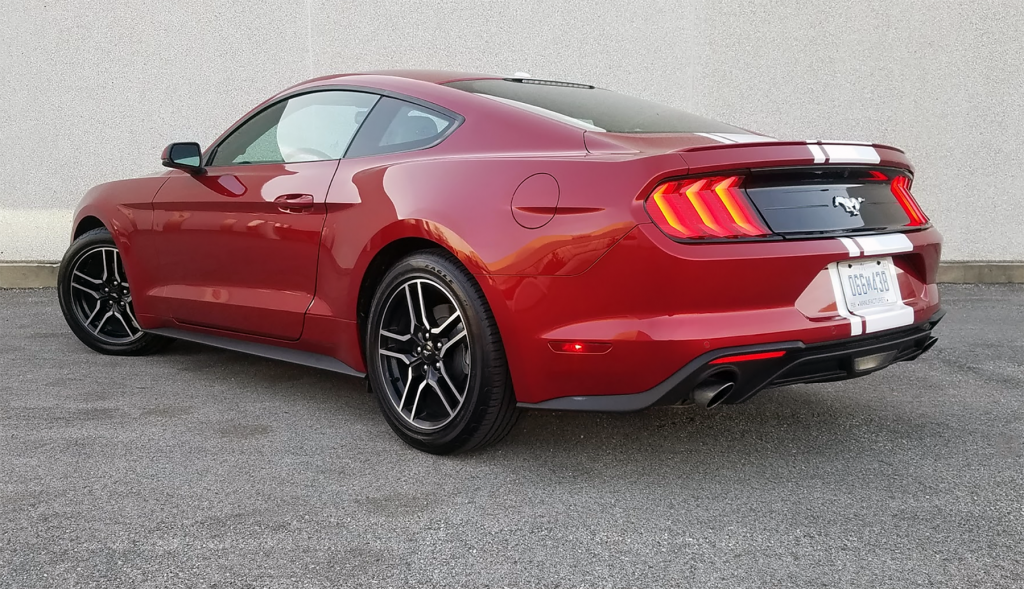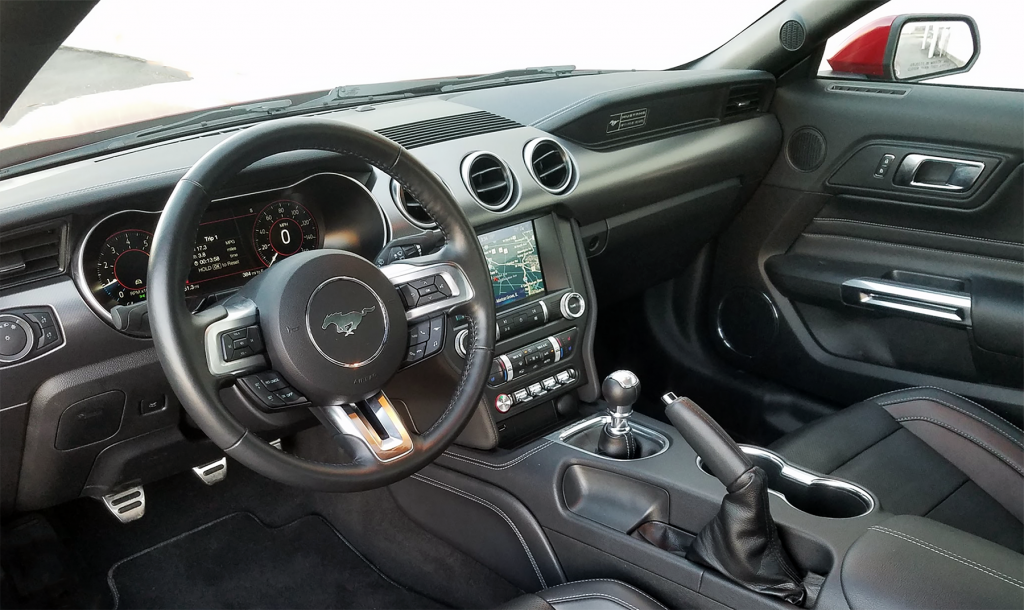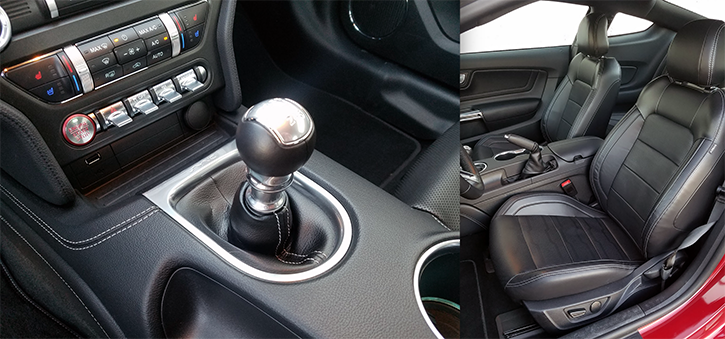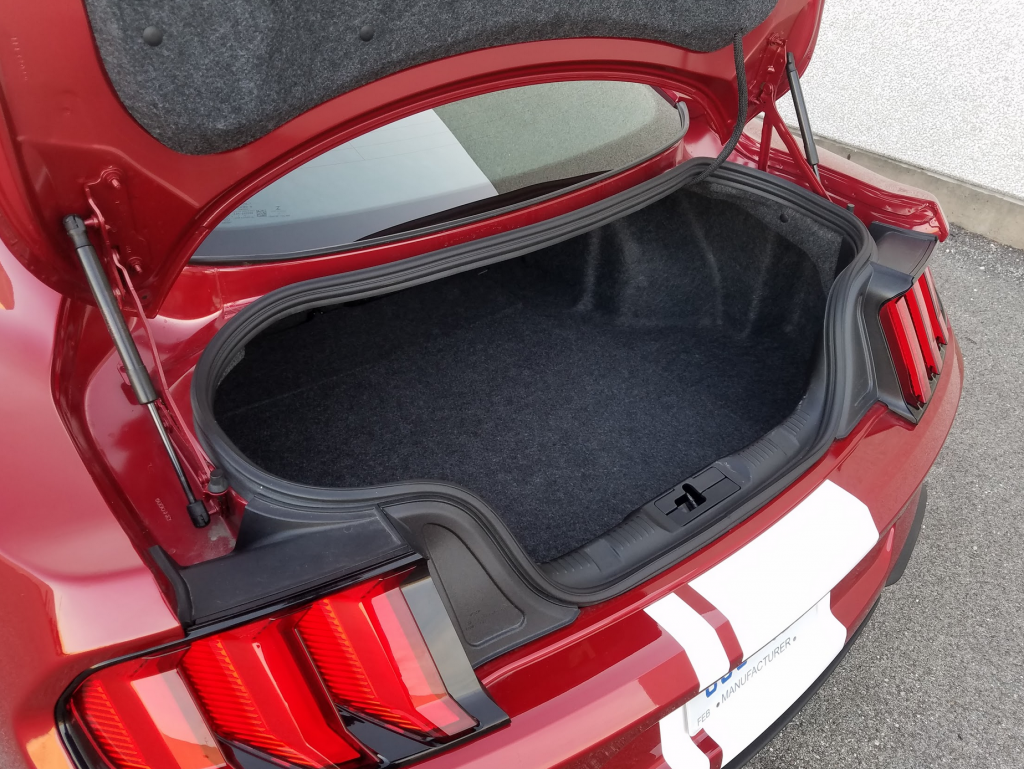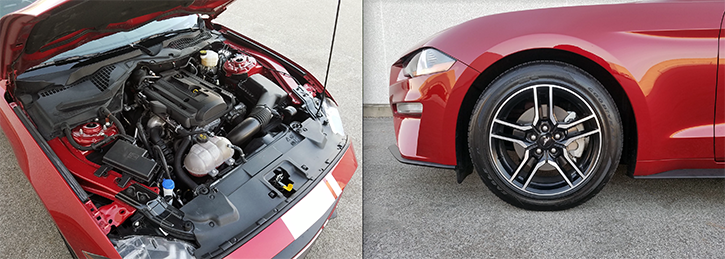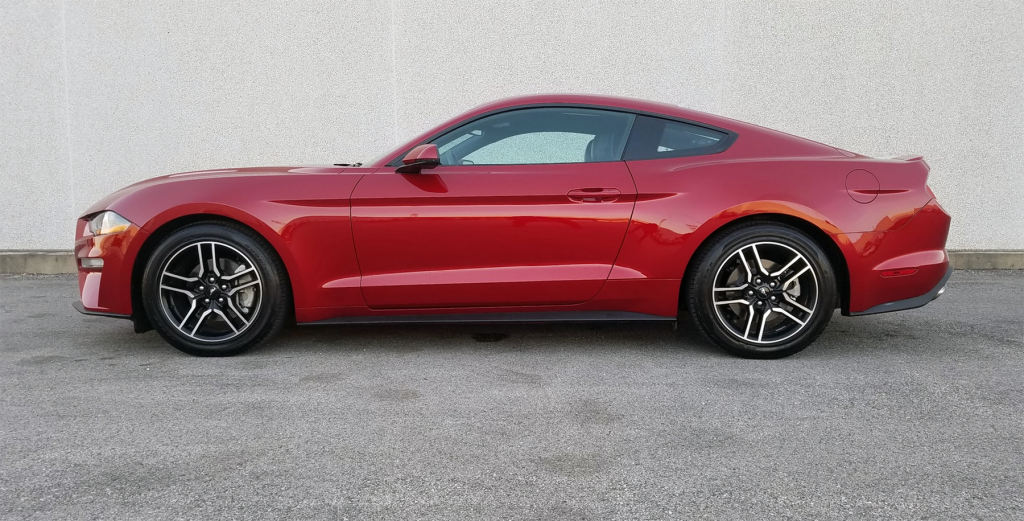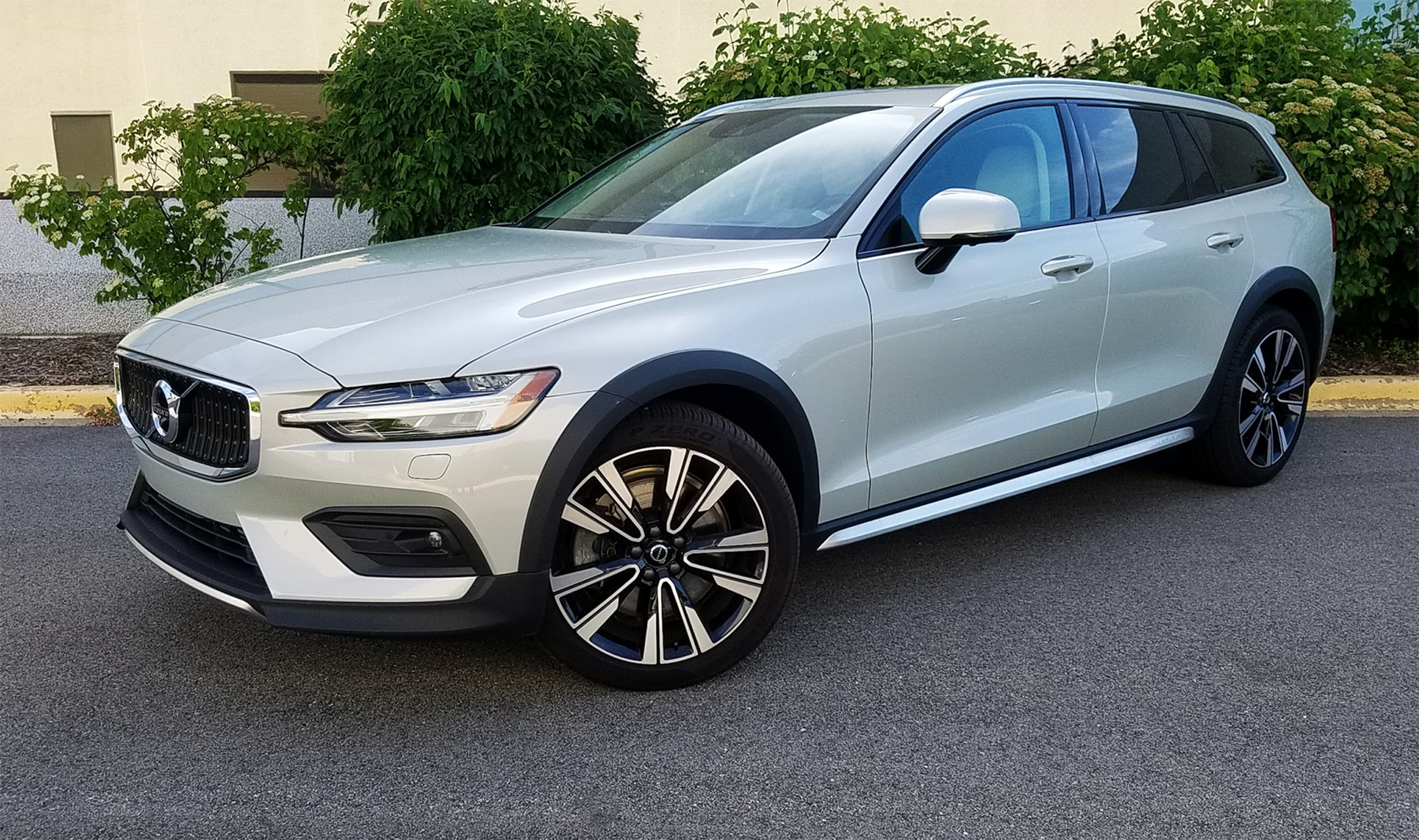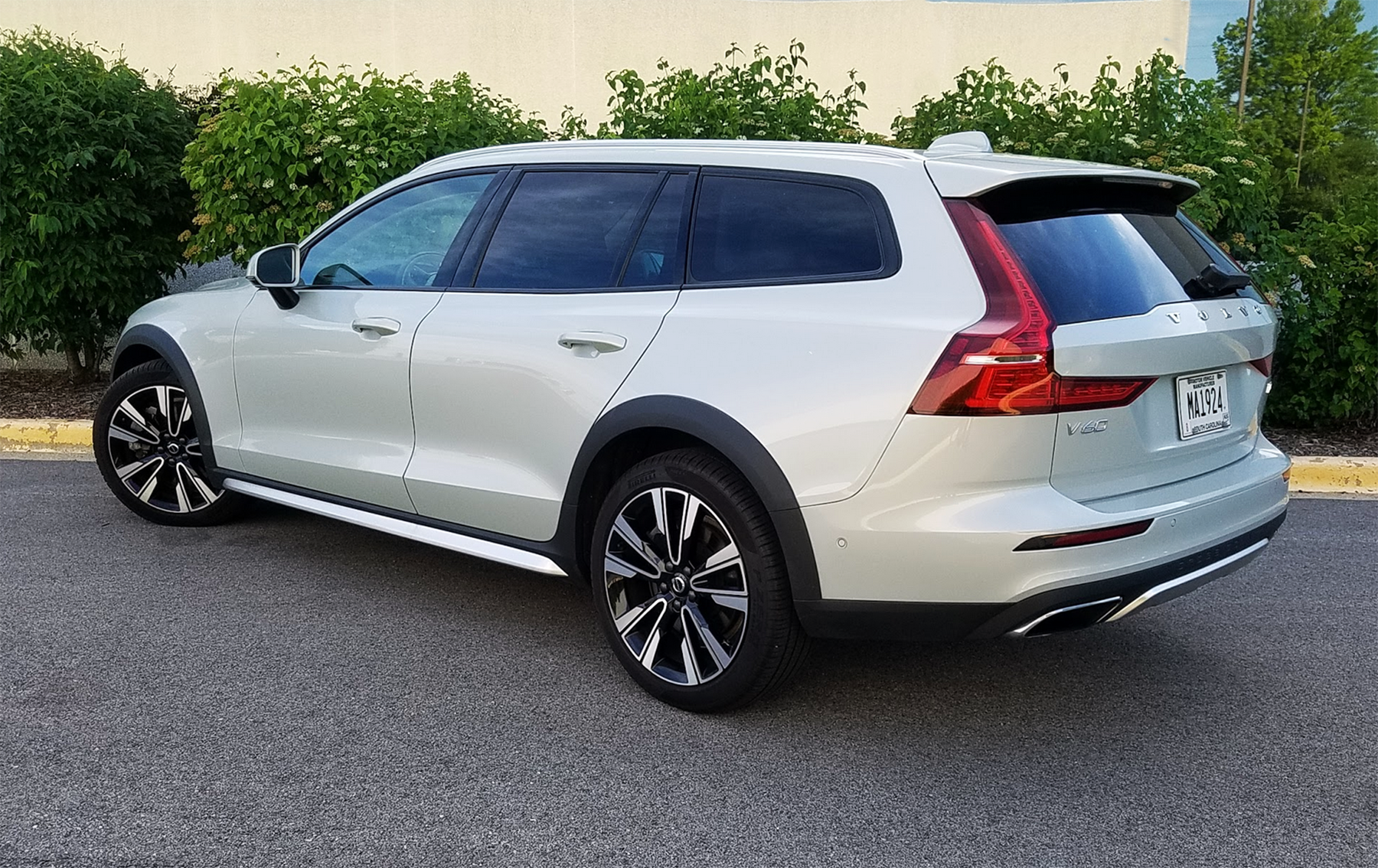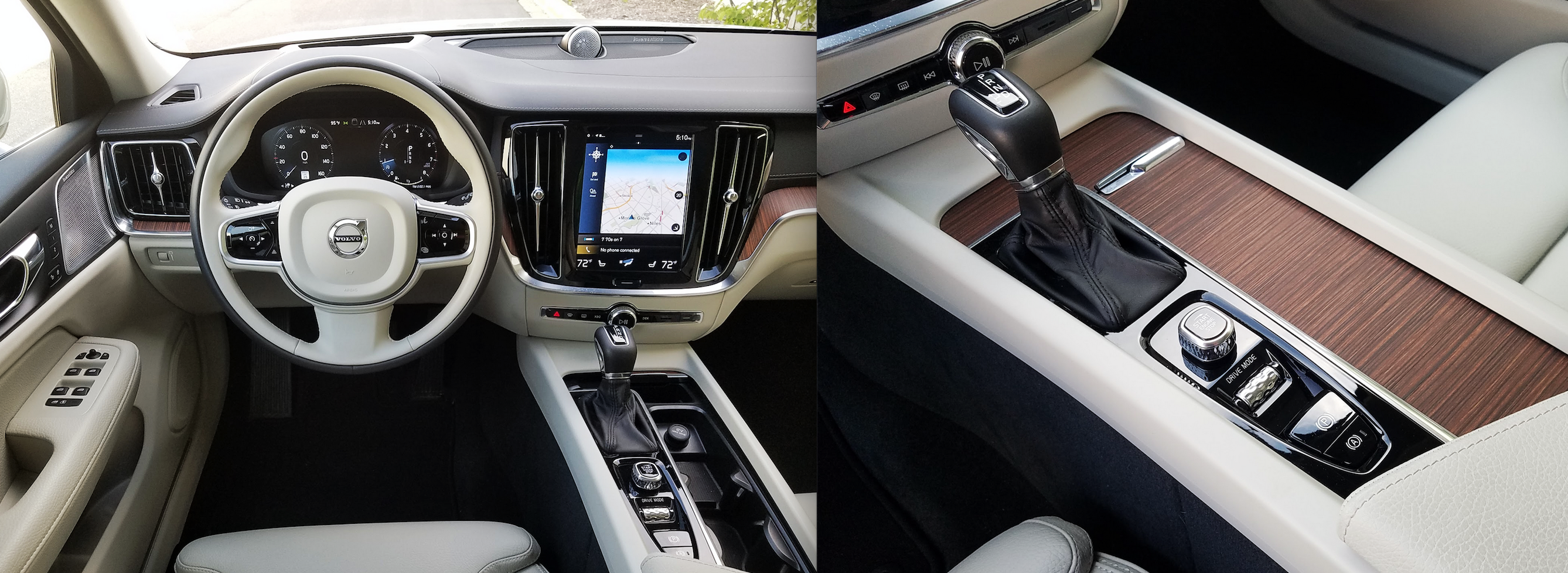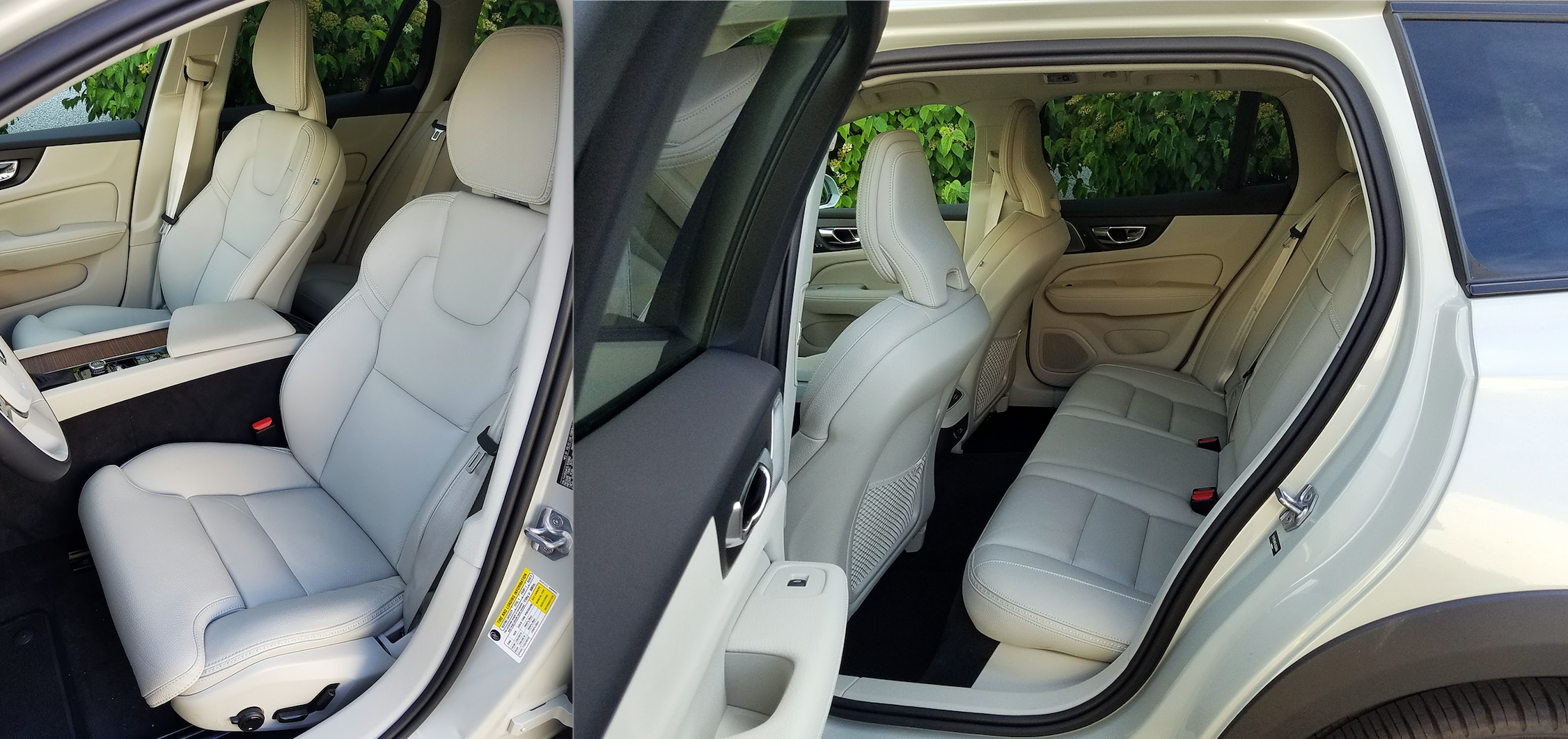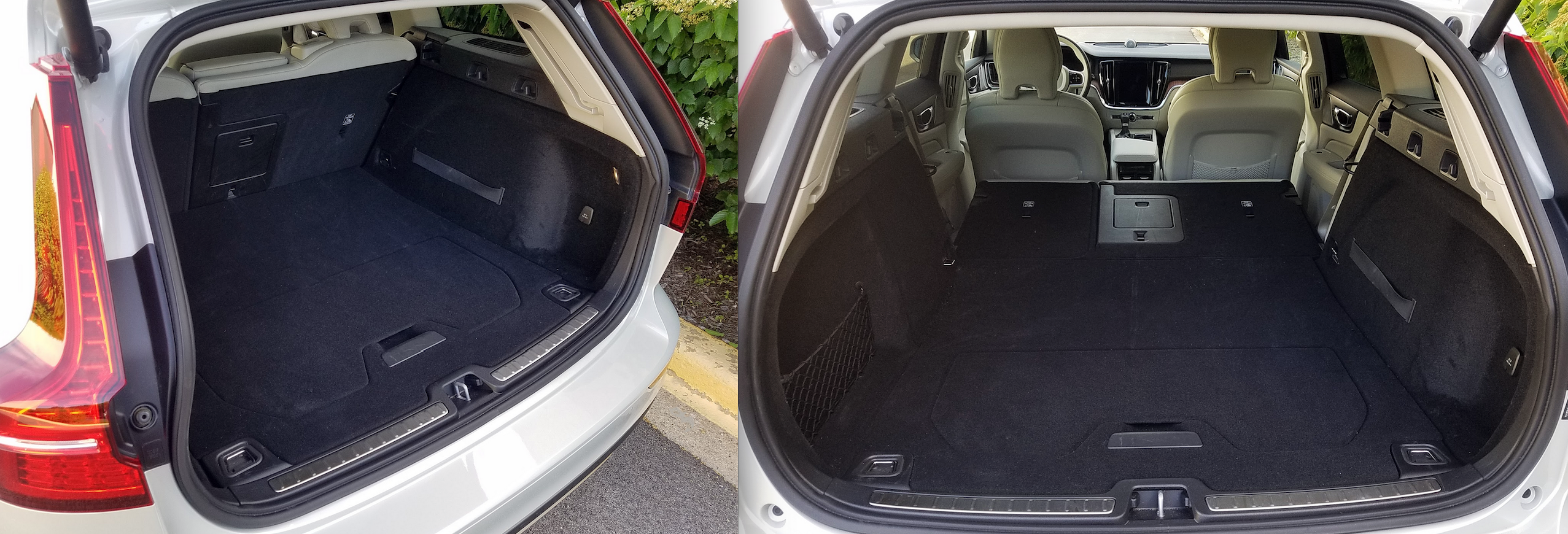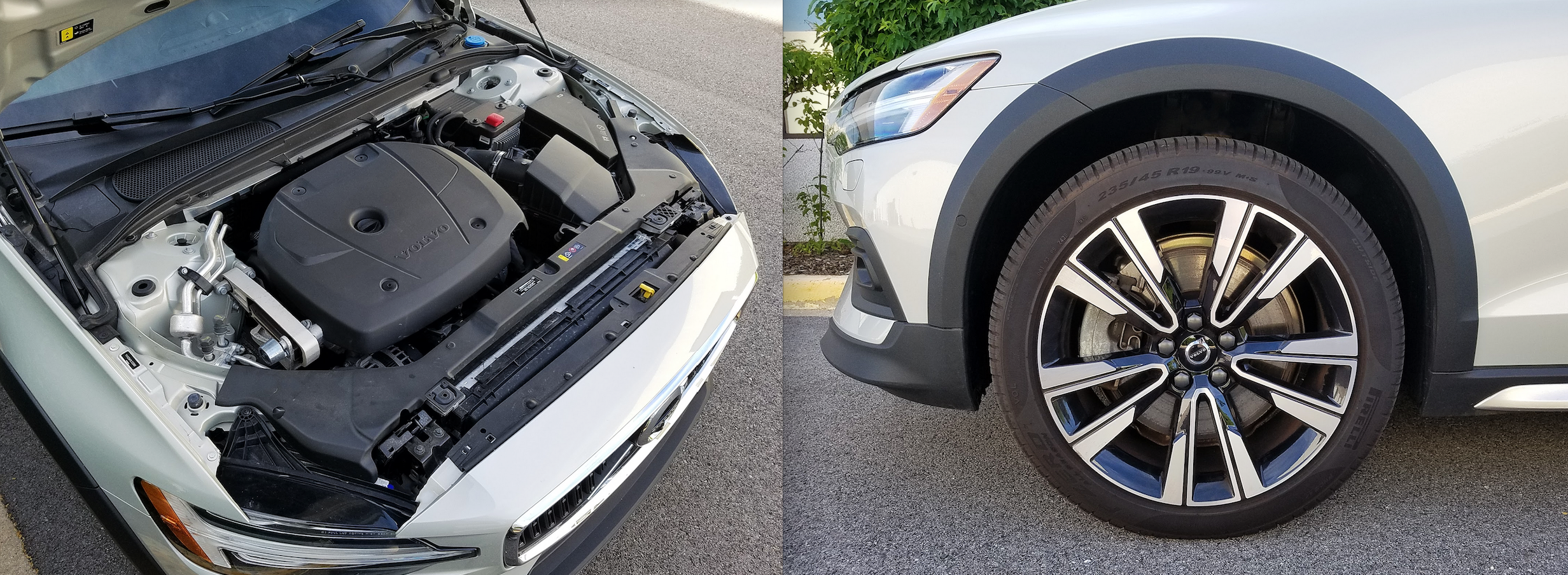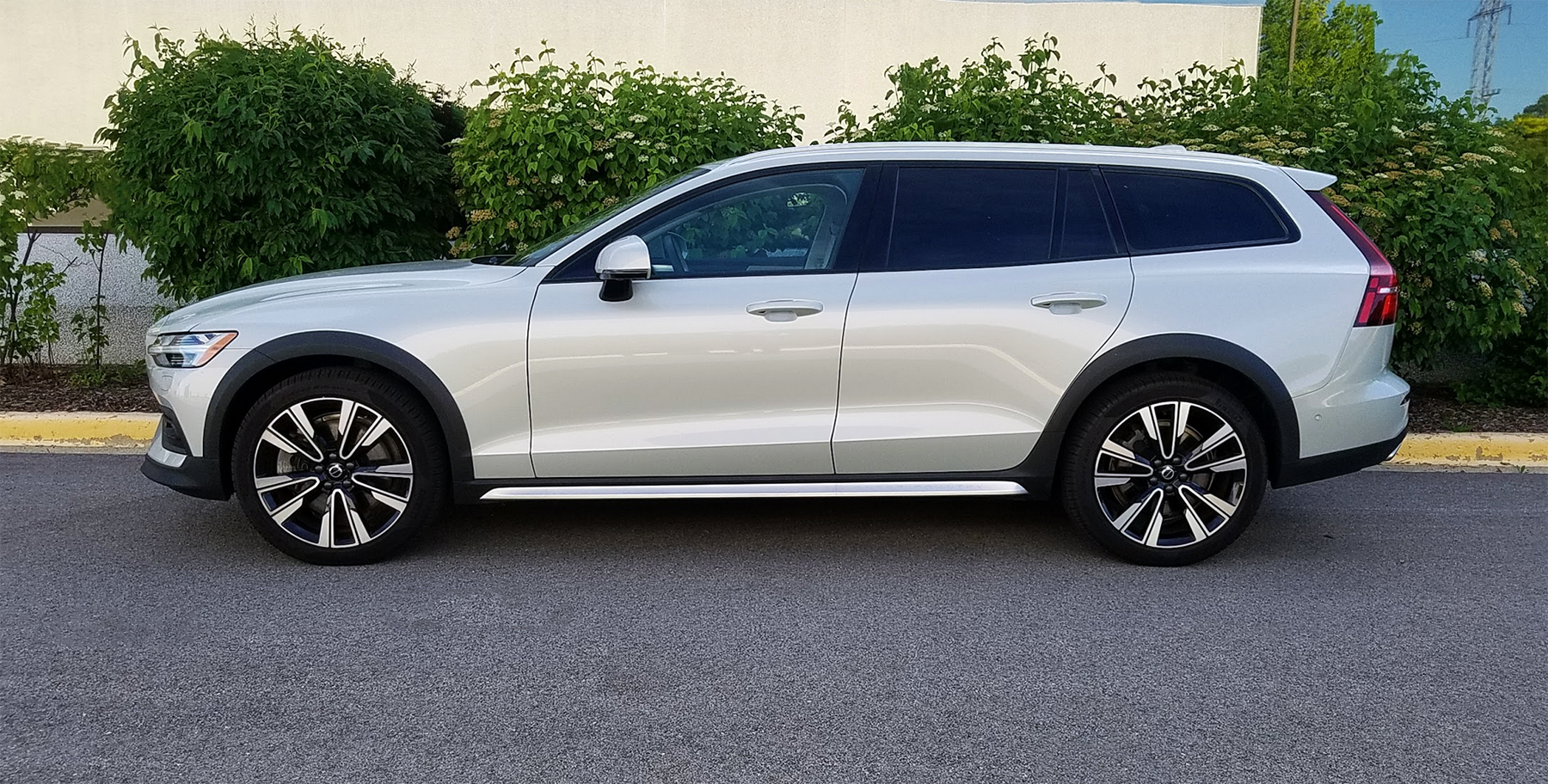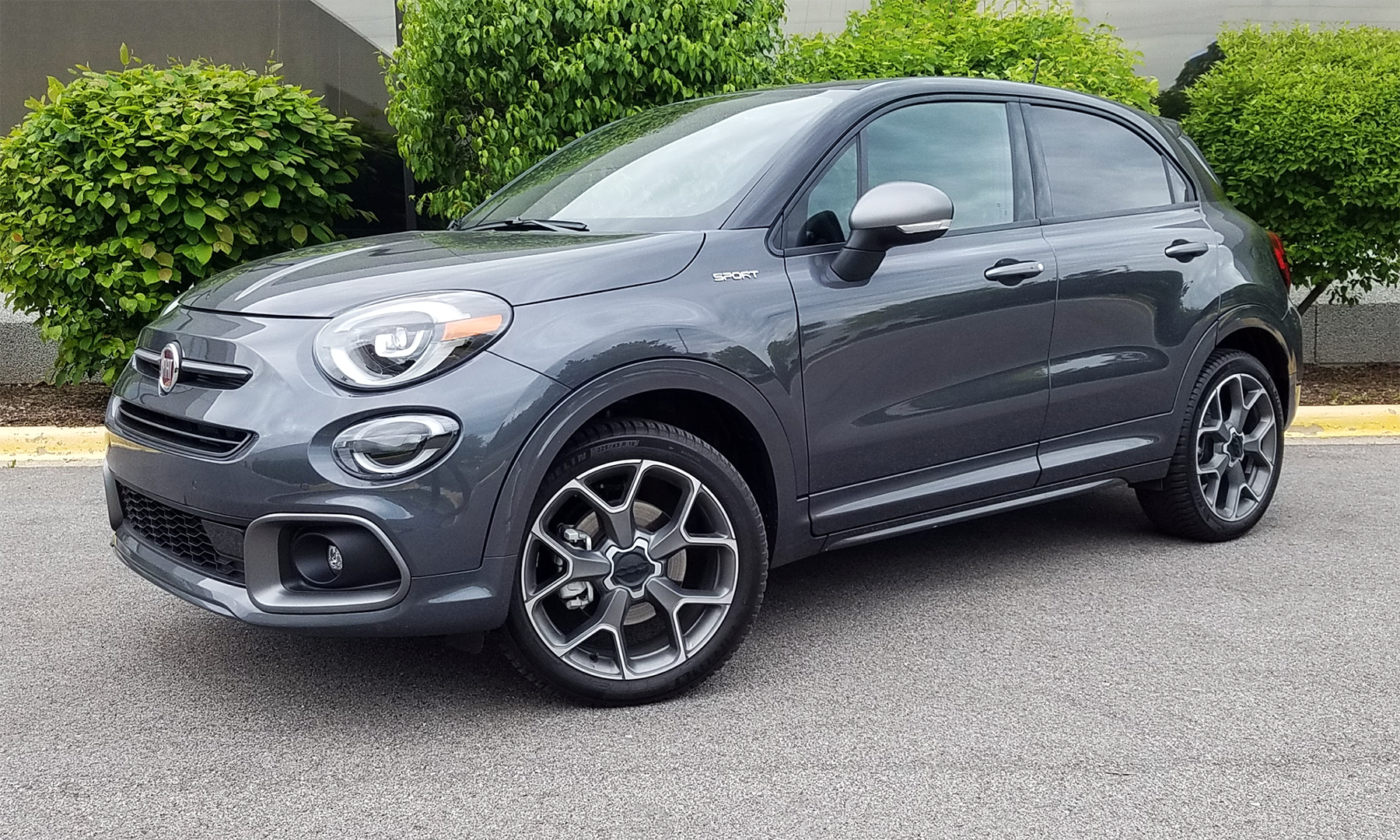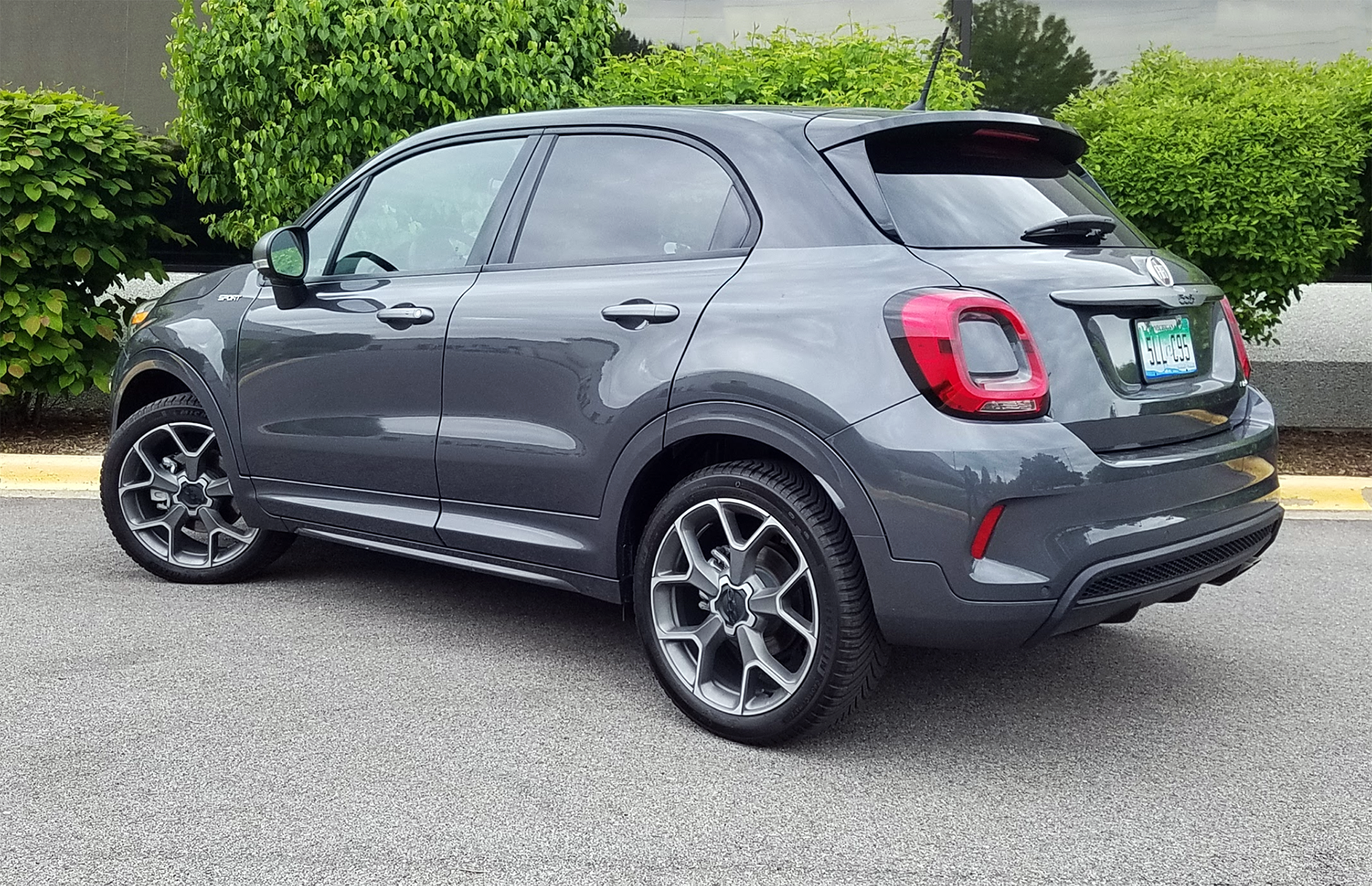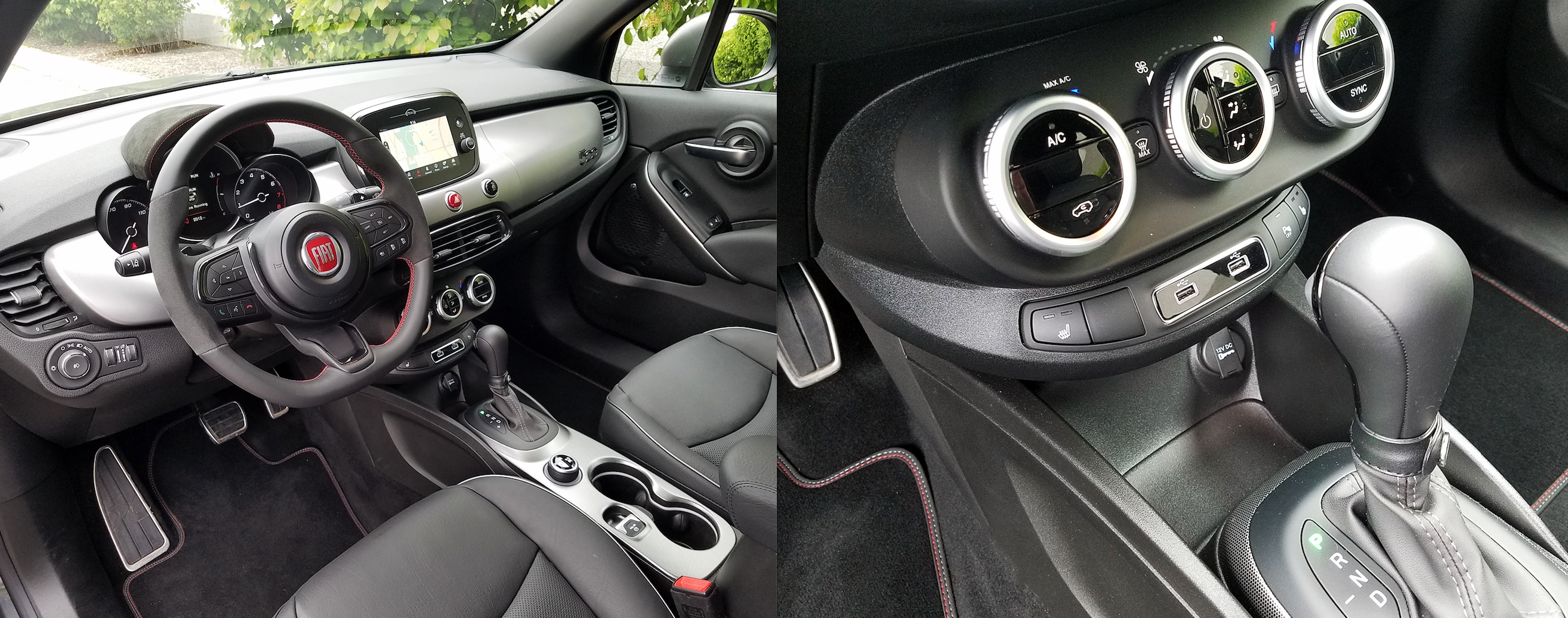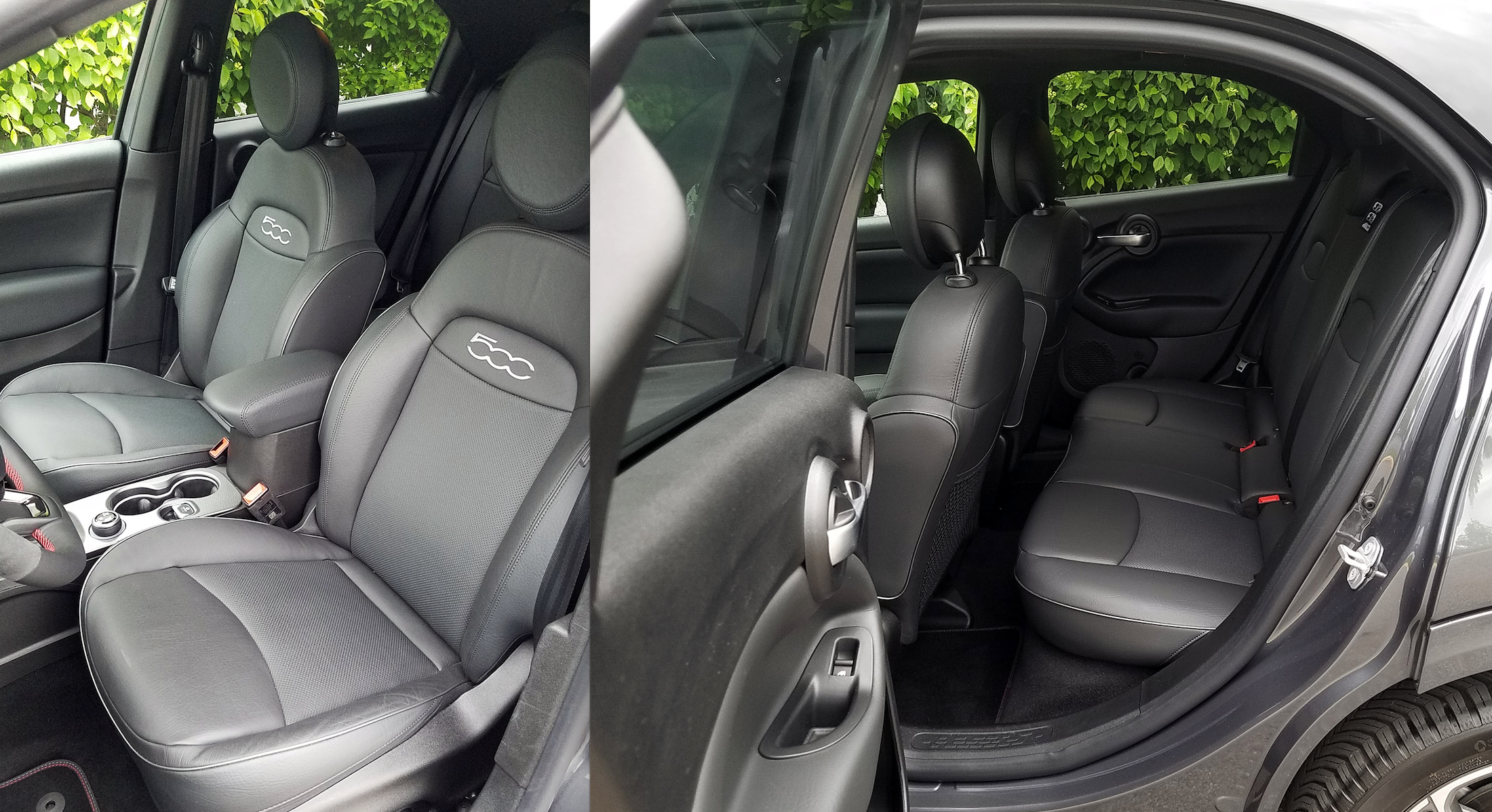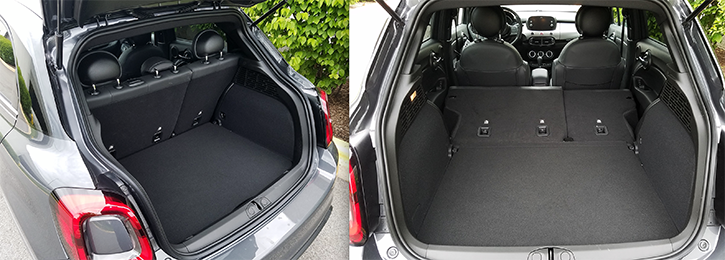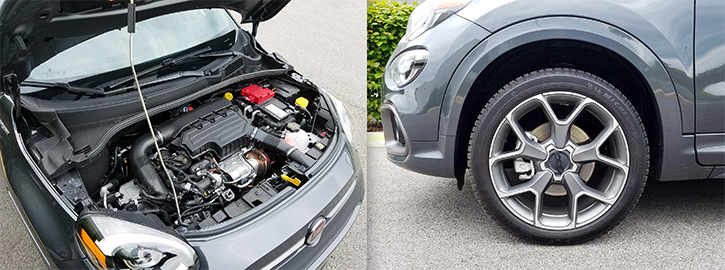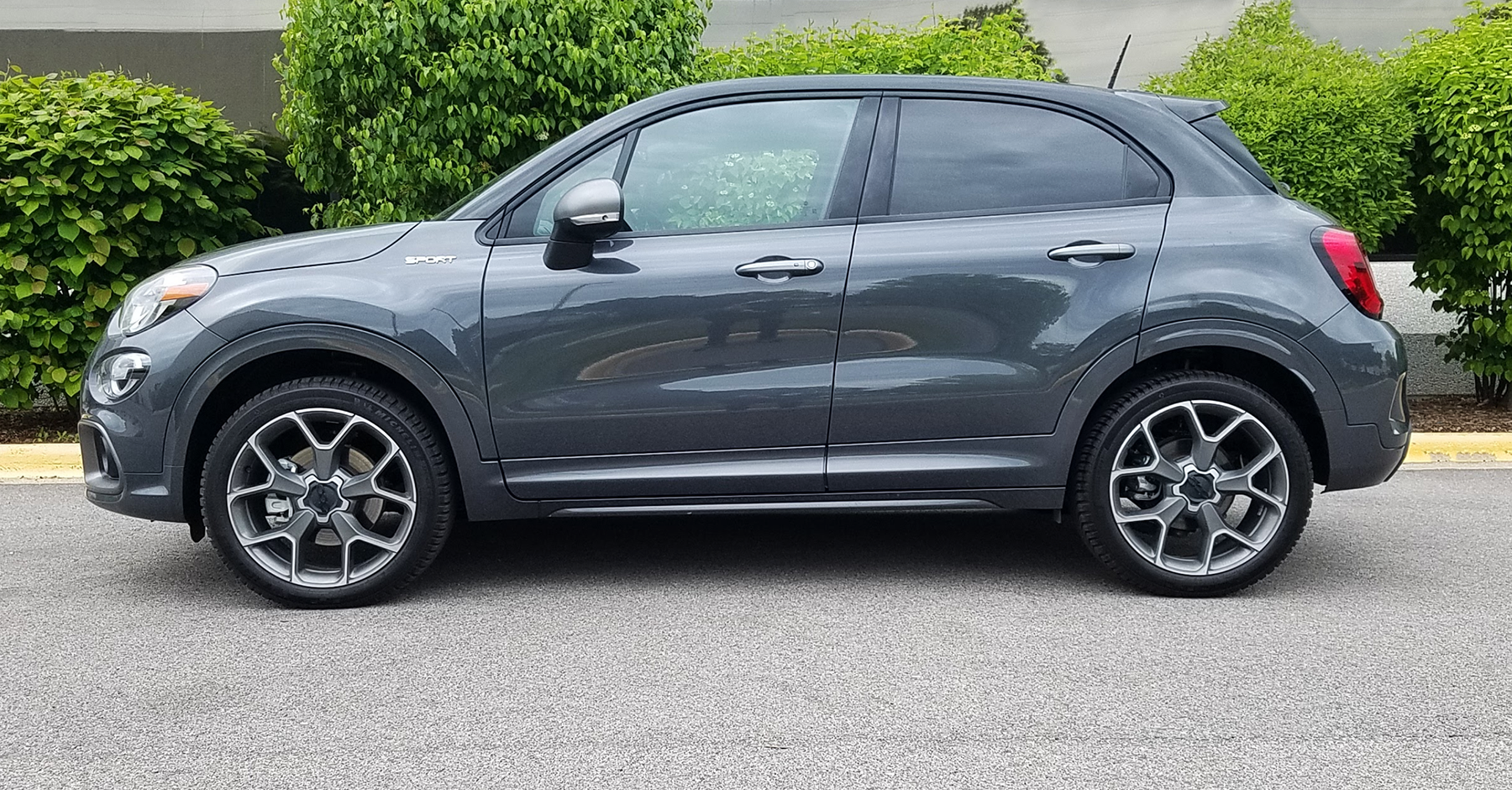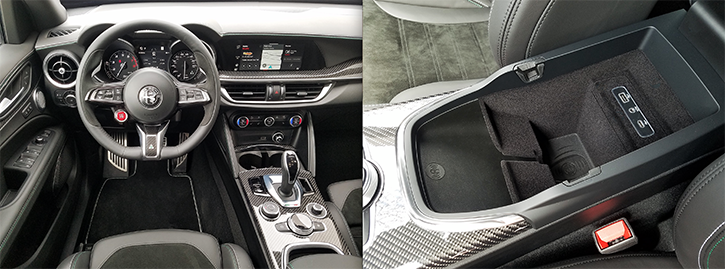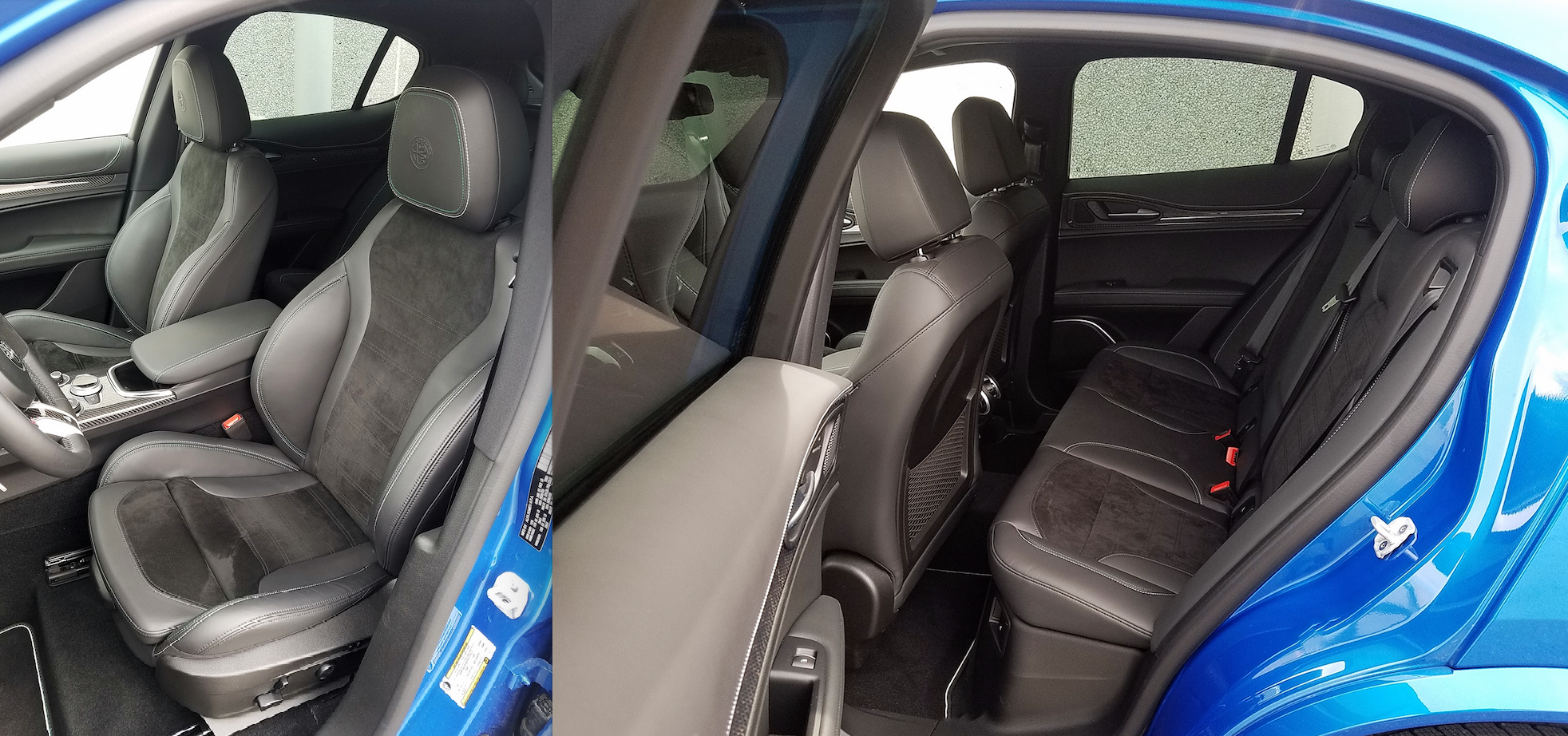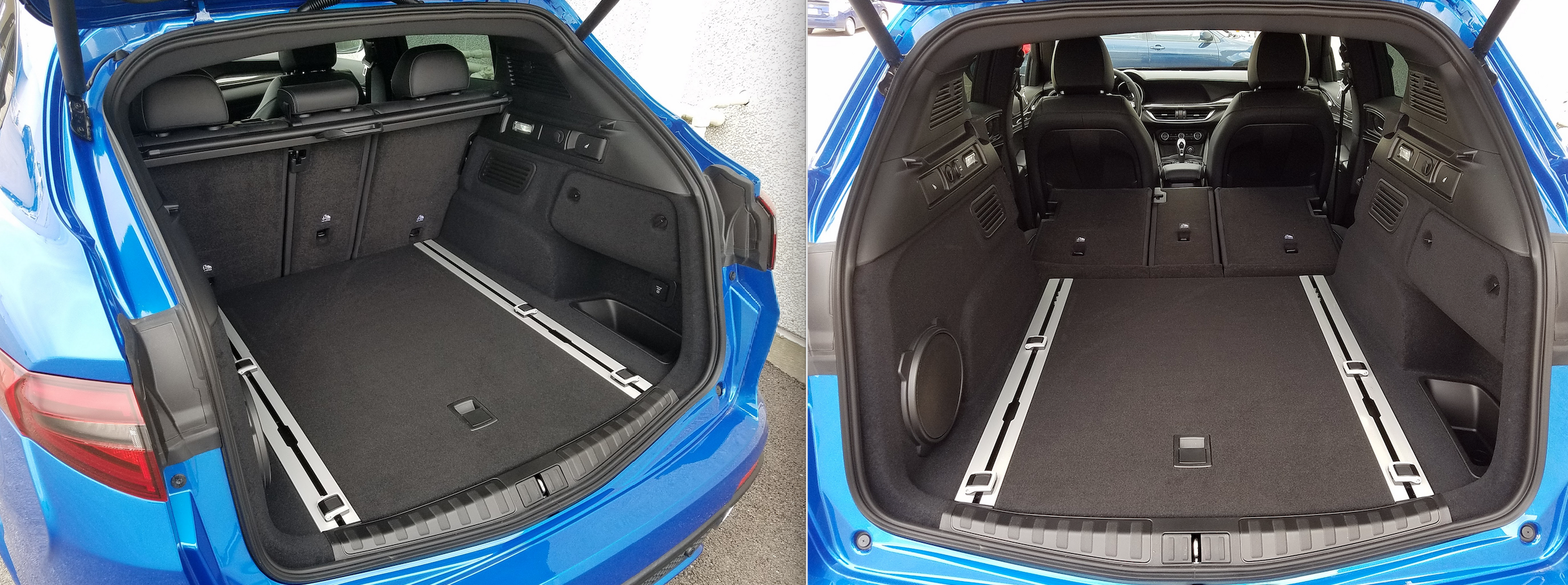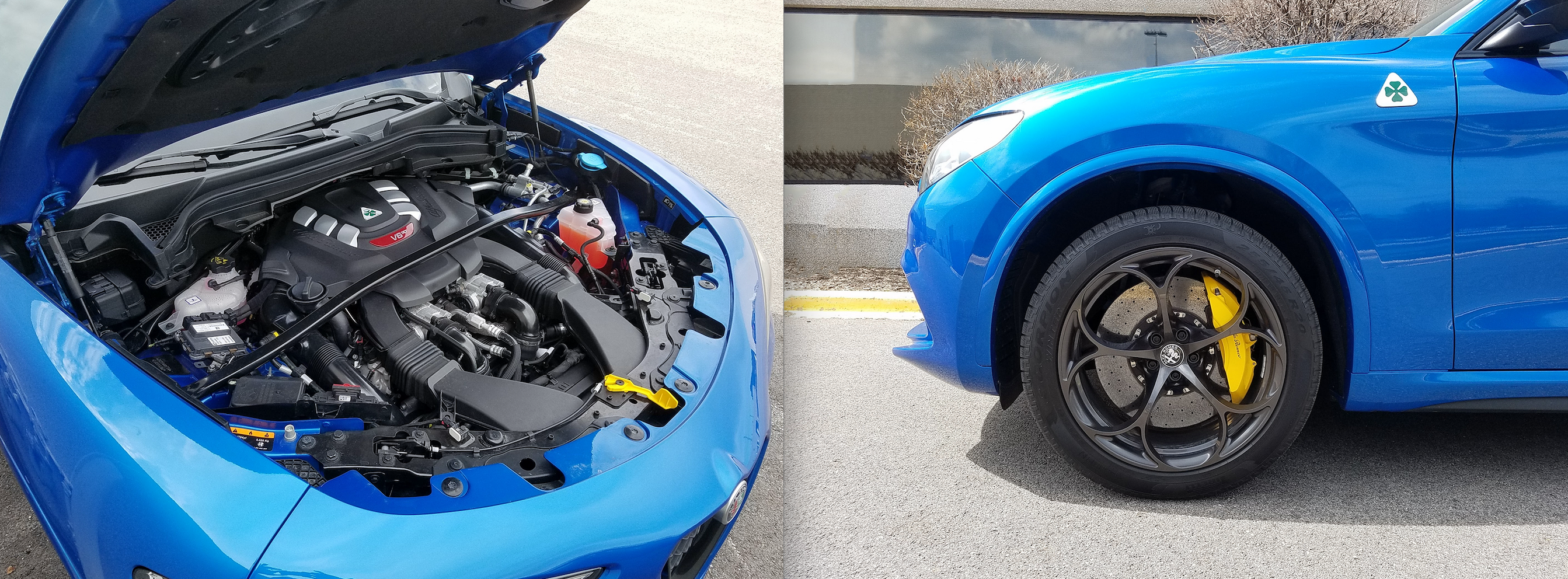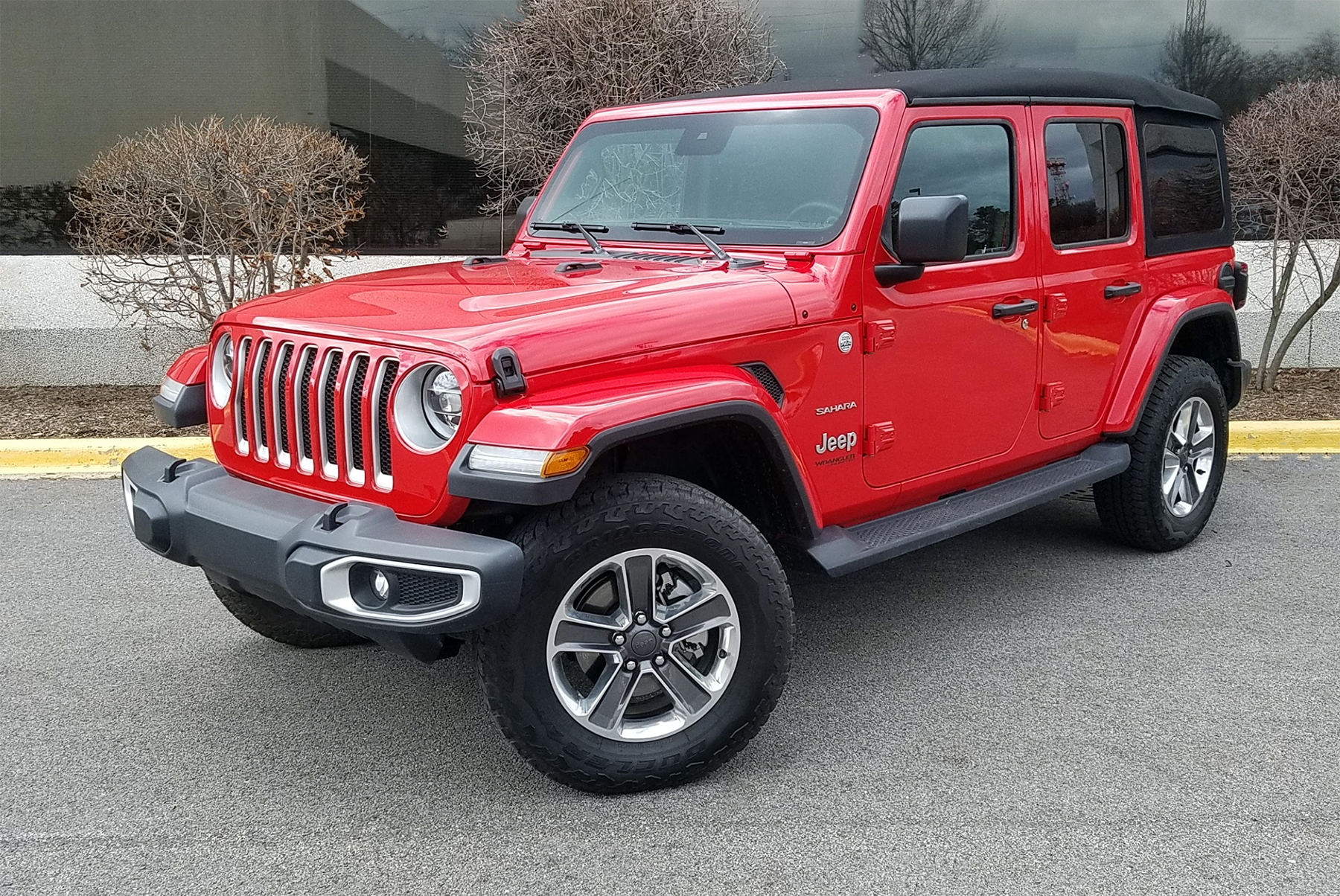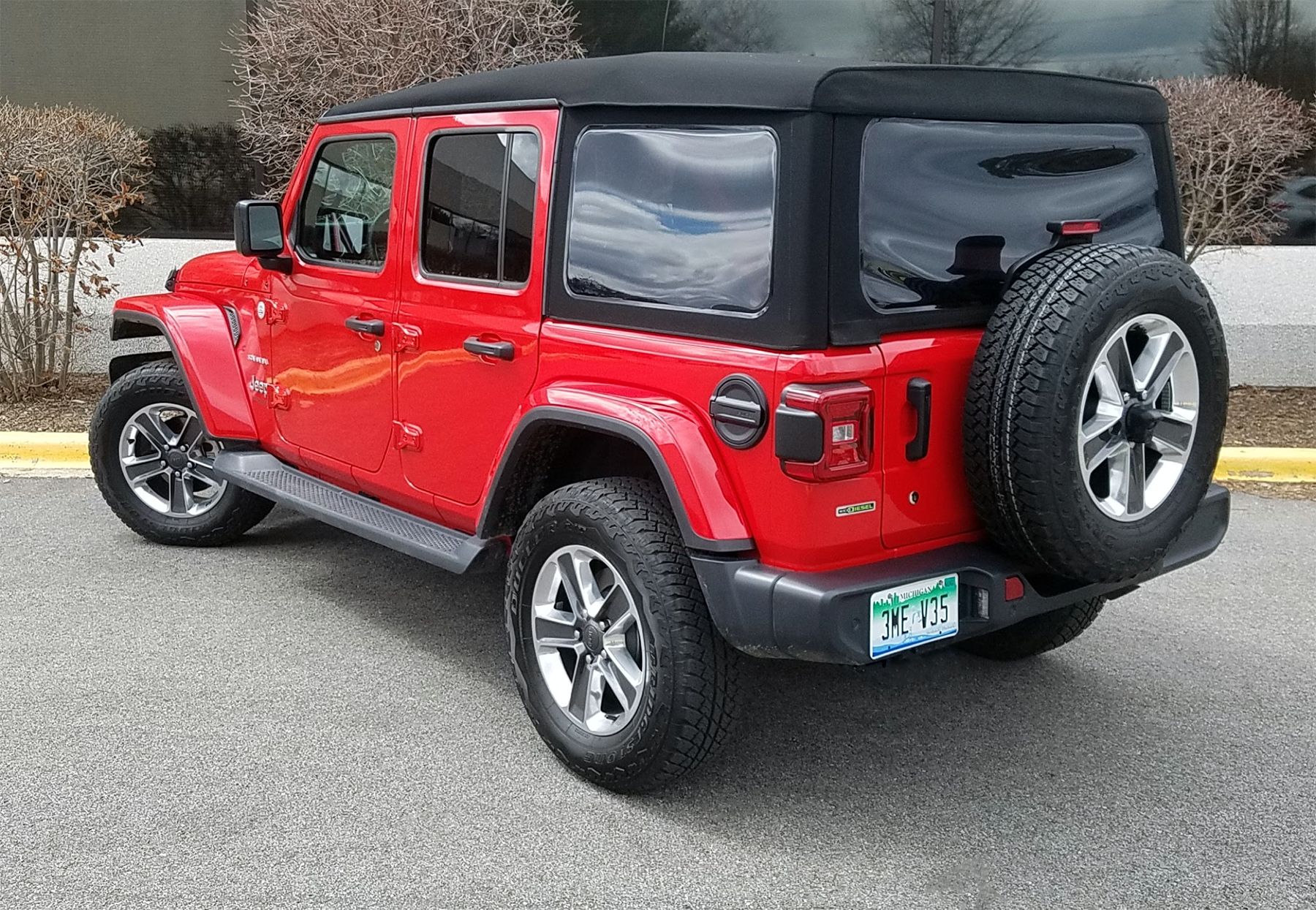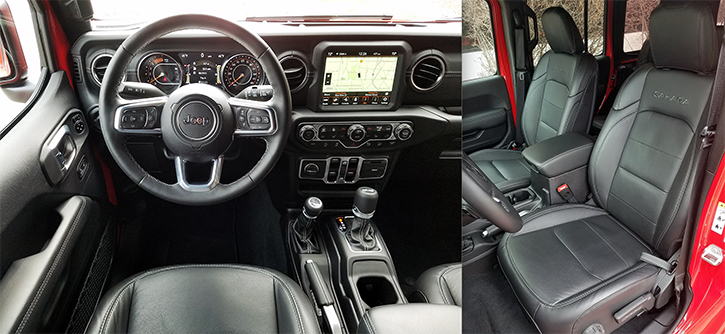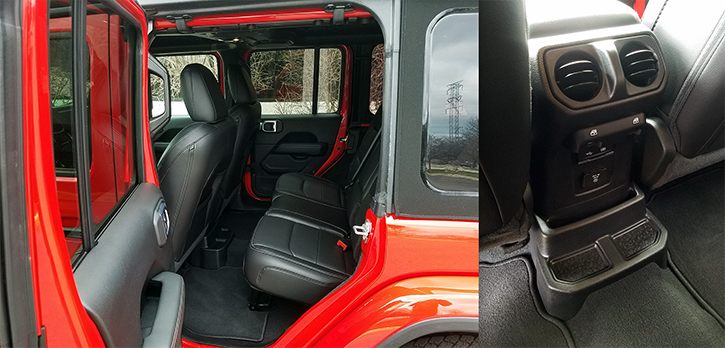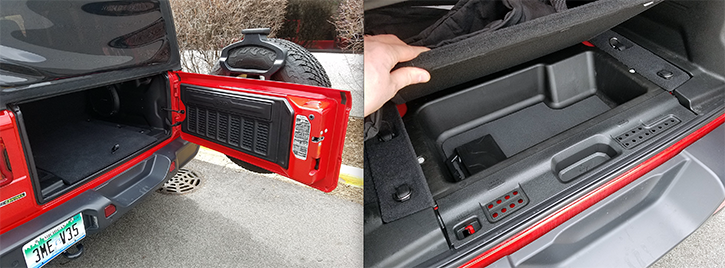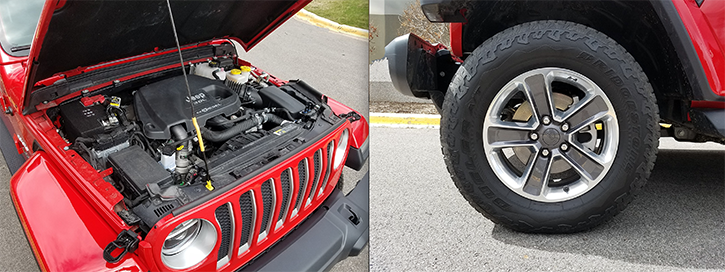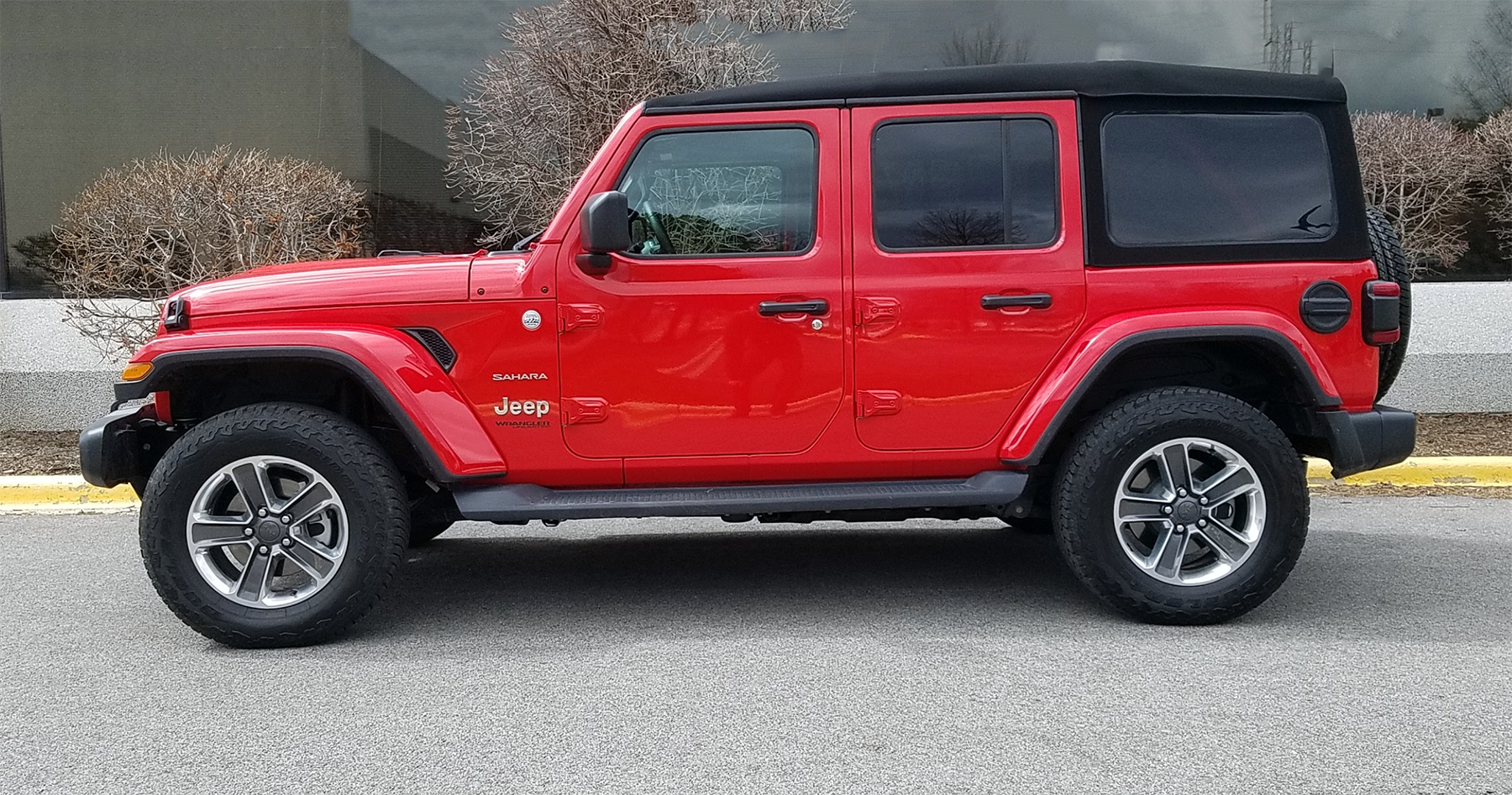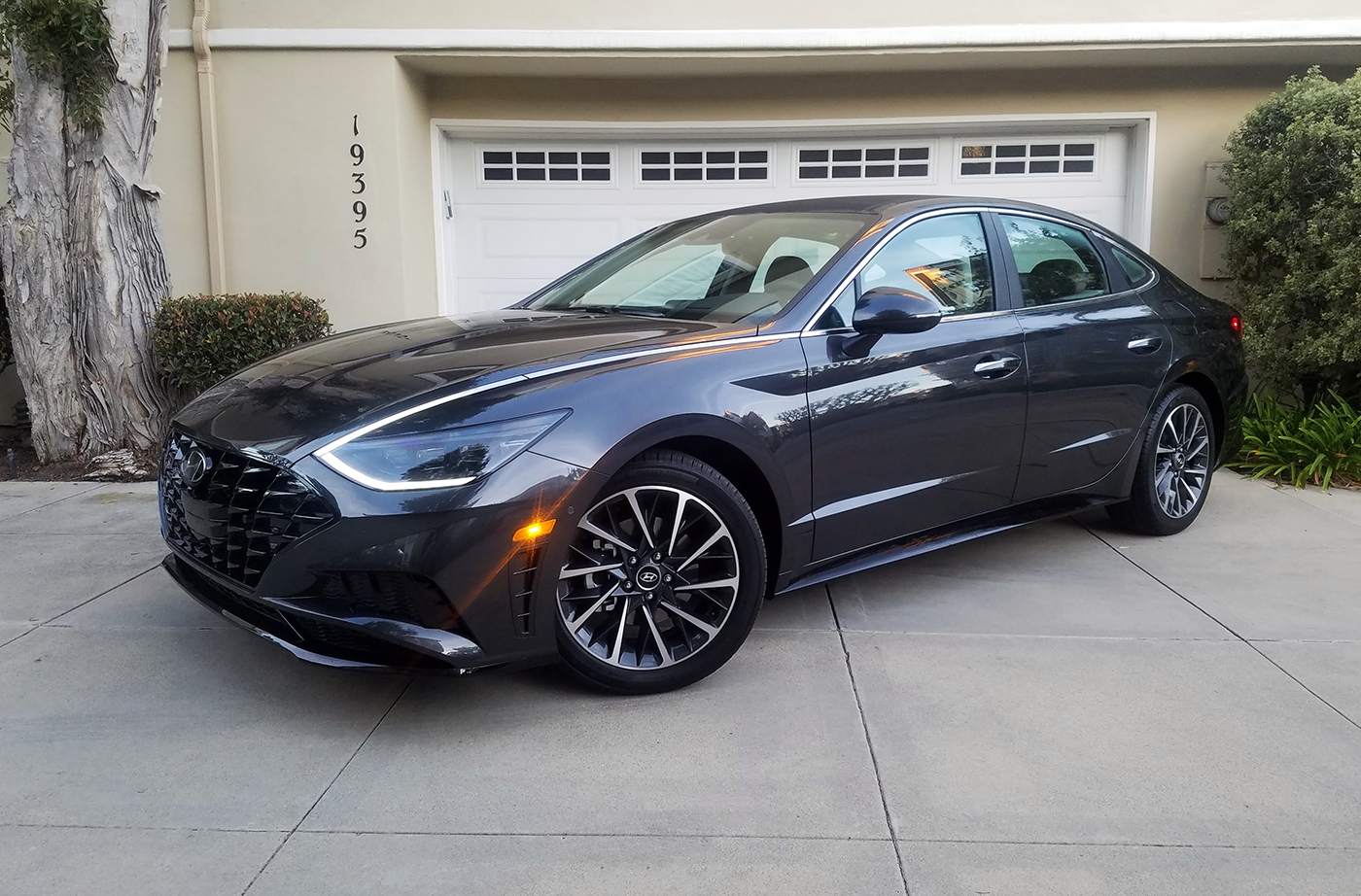
2020 Hyundai Sonata Limited in Portofino Gray
 2020 Hyundai Sonata Limited
2020 Hyundai Sonata Limited
Class: Midsize Car
Miles driven: 460
Fuel used: 14.9 gallons
| CG Report Card |
|
|
|
|
| Room and Comfort |
B |
| Power and Performance |
C+ |
| Fit and Finish |
B+ |
| Fuel Economy |
A- |
| Value |
A- |
|
|
| Report-card grades are derived from a consensus of test-driver evaluations. All grades are versus other vehicles in the same class. Value grade is for specific trim level evaluated, and may not reflect Consumer Guide's impressions of the entire model lineup. |
|
|
| Big & Tall Comfort |
|
|
| Big Guy |
B |
| Tall Guy |
B |
|
|
| Big & Tall comfort ratings are for front seats only. "Big" rating based on male tester weighing approximately 350 pounds, "Tall" rating based on 6'6"-tall male tester. |
|
|
| Drivetrain |
| Engine Specs |
180-hp 1.6-liter |
| Engine Type |
Turbo 4-cyl |
| Transmission |
8-speed automatic |
| Drive Wheels |
FWD |
Real-world fuel economy: 30.7 mpg
Driving mix: 50% city, 50% highway
EPA-estimated fuel economy: 27/36/31 (city, highway, combined)
Fuel type: Regular gas
Base price: $33,330 (not including $930 destination charge)
Options on test vehicle: Carpeted floor mats ($135)
Price as tested: $34,365
Quick Hits
The great: Comfortable ride; excellent, easy-to-use control layout
The good: Striking styling; innovative technology features; respectable fuel economy
The not so good: Middling powertrain performance; a tad less spacious inside than some class rivals
More Sonata price and availability information
Damon Bell
We’re guessing that most of you have seen the cheeky Super Bowl commercial that focuses on the all-new 2020 Hyundai Sonata’s marquee feature. We’ll spare you the exaggerated Boston accents, and say that as nifty as Smart Park might be, it’s not what impressed us most about the new Sonata. More on that in a minute.
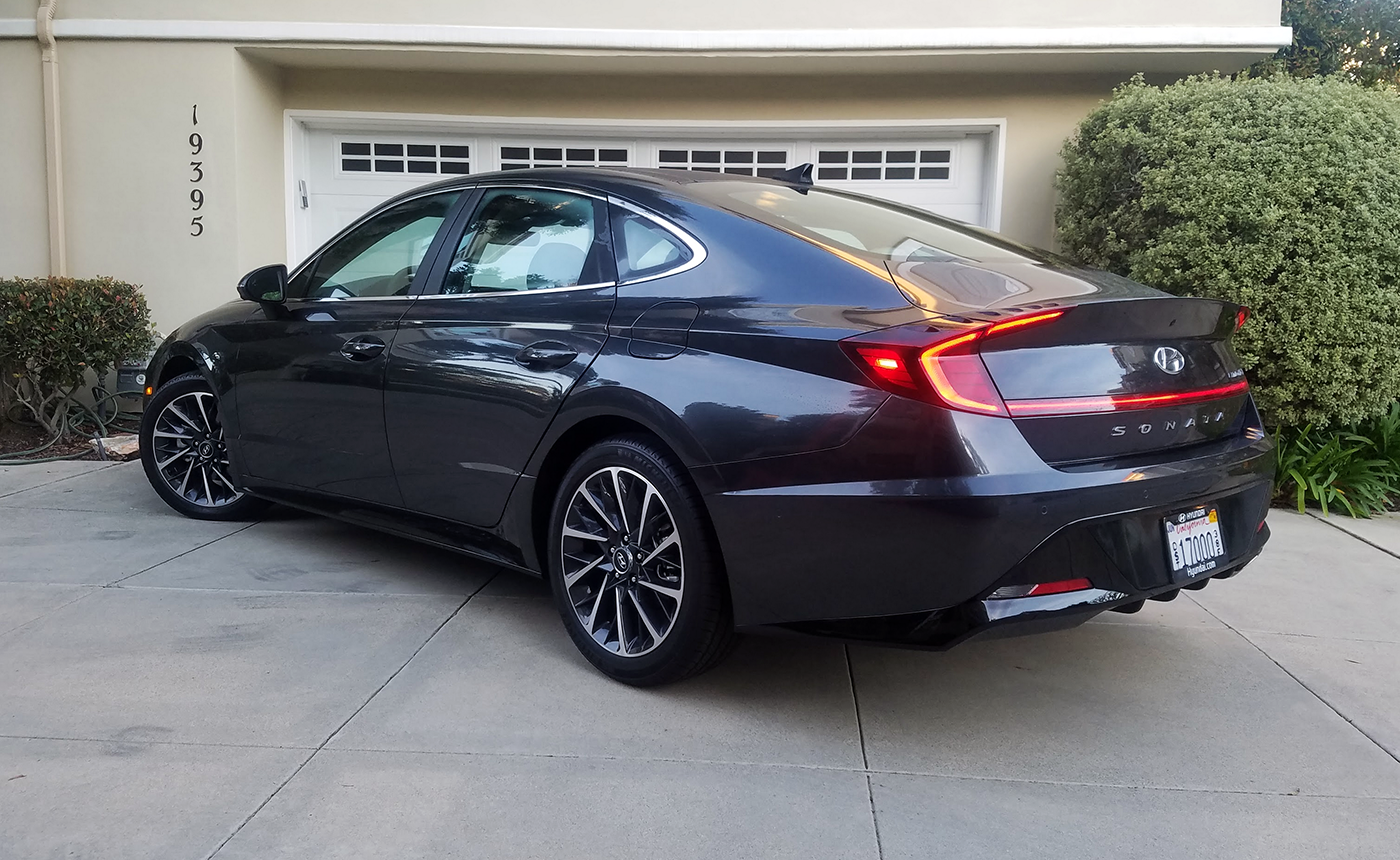
The Sonata gets swoopy new looks for 2020, along with a host of new comfort and technology features.
Hyundai’s midsize sedan is indeed redesigned from the ground up for 2020, and it comes in the midst of an aggressive new-product cadence for Hyundai. The sporty Veloster hatchback and Santa Fe 2-row midsize SUV were both redesigned for 2019, and Hyundai’s new arrivals for 2020 include the all-new Palisade 3-row midsize SUV (which launched last summer) and Venue subcompact SUV, which went on sale earlier this year.
Test Drive: 2020 Volkswagen Passat 2.0T SEL

The Sonata’s dashboard layout is attractive and functional. The center console houses twin cupholders with a handy cellphone slot, wireless charging pad with USB and charging ports, and a nicely designed push-button shifter.
The 2020 Sonata replaces a 2015 basic design that received a freshening for 2018. The revised model lineup now ascends through entry-level SE (MSRP: $23,600), SEL ($25,700), SEL Plus ($27,650), and fully-loaded Limited ($33,330) models. Consumer Guide editors actually tested two Limited models that differed only in color—one in Southern California (prior to COVID-19 lockdowns) and one in our Chicagoland home base. And, stay tuned… our review of the new Sonata Hybrid, which recently launched as a 2020 model as well, is coming soon.
First Look: 2021 Hyundai Elantra
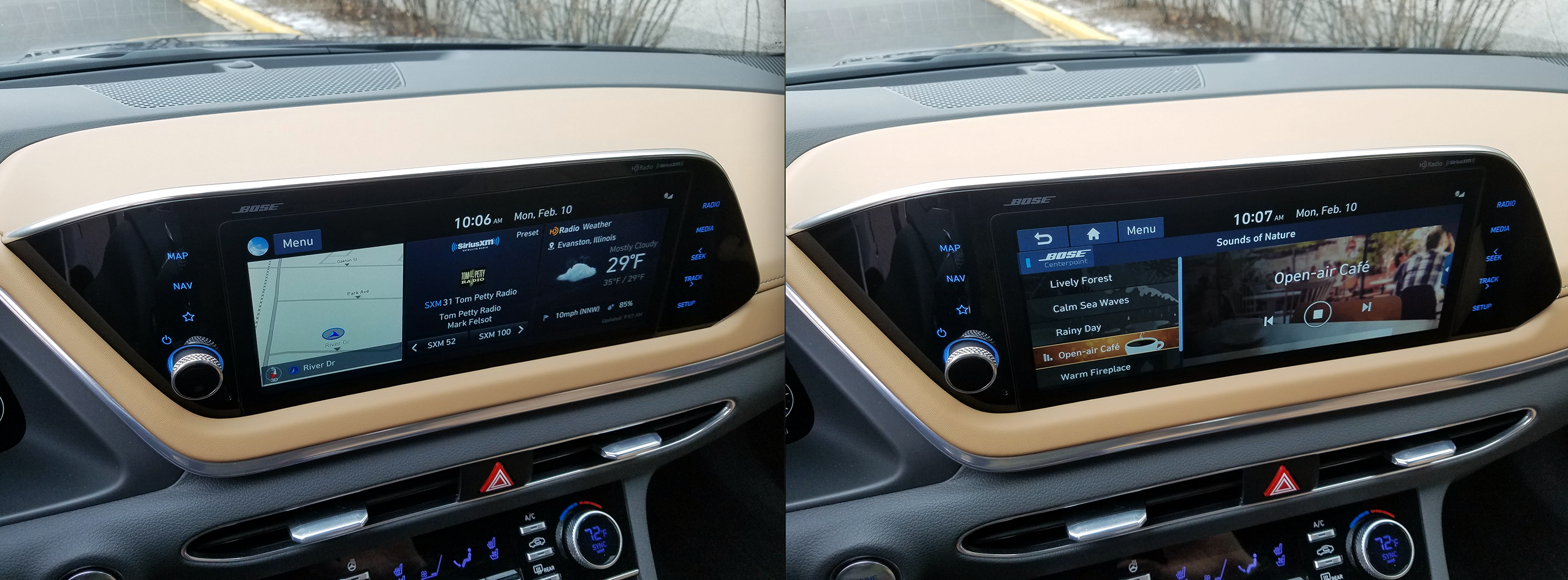
The generously sized infotainment touchscreen can be configured in a three-tile display that makes it easy to see info at a glance. Another novel feature is Sounds of Nature, which can play a few different relaxing ambient soundtracks.
Both the SEL Plus and Limited come standard with a turbocharged 1.6-liter 4-cylinder that makes 180 horsepower and 195 pound-feet of torque and is EPA-rated at 27 mpg city/36 highway/31 combined. The turbo 1.6 is technically the “step-up” powerplant, but it’s not that much of an upgrade in either power or fuel economy over the SE and SEL models’ naturally aspirated 2.5-liter 4-cylinder. The 2.5 makes 191 horsepower and 181 lb-ft of torque, and is rated at 28 mpg city/38 highway/32 combined. Both engines are paired with an 8-speed automatic transmission.
Test Drive: 2020 Subaru Legacy Limited
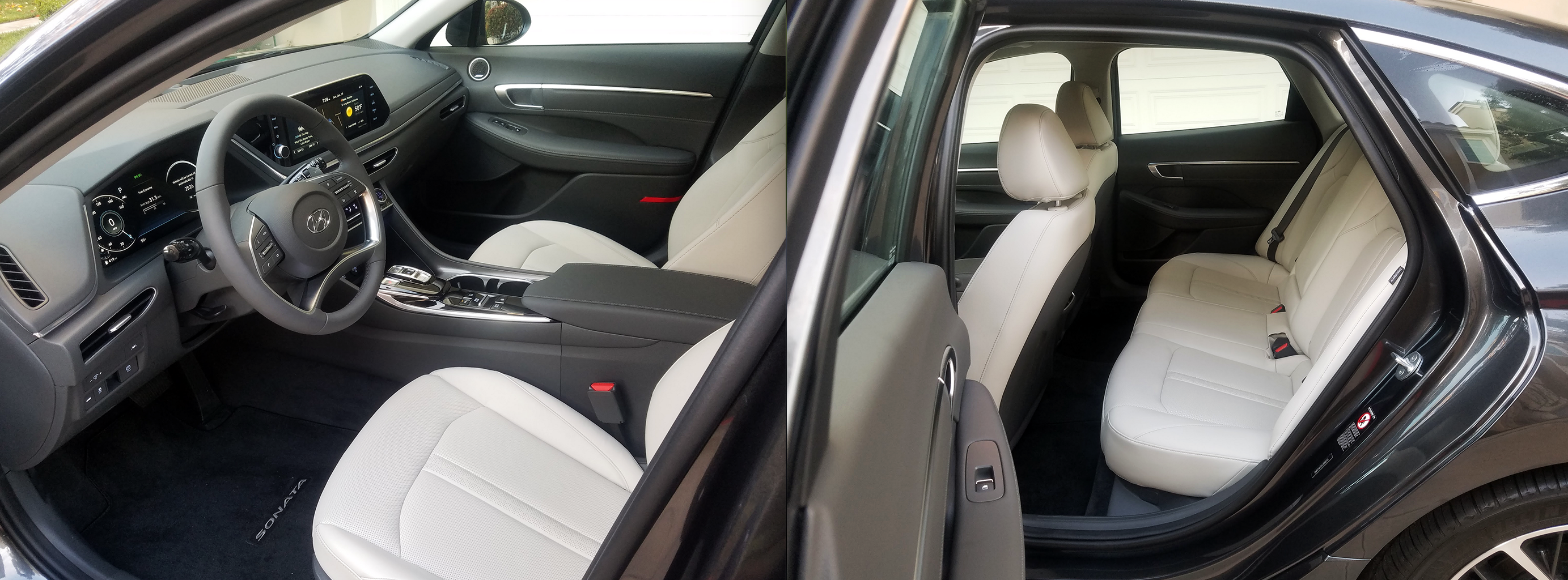
The Sonata is spacious enough inside for most adults, though extra-tall passengers might be a bit cozier than they’d like in the back seat–the Honda Accord, Toyota Camry, and Volkswagen Passat are a bit more accommodating here.
Though we haven’t driven the base Sonata engine, we’re a bit puzzled by the logic of offering two different powerplants that are so close together in output. Shoppers looking for more power are out of luck, but not for long–Hyundai is planning to add a sporty Sonata N-Line model for 2021 that will be powered by a turbocharged 2.5 four with at least 290 horsepower and 310 lb-ft of torque.
Test Drive: 2020 Nissan Altima SL AWD
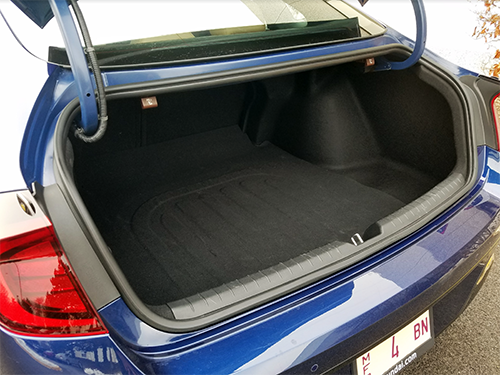
There’s 16.3 cubic feet of cargo volume in the Sonata’s trunk–right on par with most midsize-sedan rivals.
The turbo 1.6 engine is perfectly adequate, but nothing more. It’s fine in around-town driving, but it can be caught flat-footed on the highway when you’re looking for passing power—the transmission takes a beat to drop to a lower gear, and the turbo takes a bit to spool up to deliver good “go.” The transmission feels like it is tuned for economy more than responsiveness, but it’s reasonably alert and shifts are pleasantly smooth for the most part.
Though we did a smidge better fuel-economy-wise with our California test car (30.7 mpg in an even mix of city/highway driving), our own observed numbers for both our test vehicles stuck pretty close to the EPA ratings. Overall, this Sonata’s economy is on par with similarly powerful midsize-sedan rivals.
In Defense of the Sedan: A Minneapolis Family Road Trip in the 2019 Mazda 6
The ride quality is notably more refined than Sonatas of the not-too-distant past—Hyundai has made great strides here in recent years. Handling is composed and competent, with pleasant, communicative steering, but it’s not particularly invigorating. The Sonata is still essentially a middle-of-the-road mainstream sedan; the Honda Accord, Mazda 6, and sportier versions of the Toyota Camry have a bit of an edge here, but the Sonata is agile enough for the average shopper who’s simply looking for a comfy commuter.
One could argue that driving dynamics aren’t really the main focus of the Sonata, however… dynamic styling and technology features are. Smart Park (or Remote Smart Parking Assist, to use its full name) is the headliner here. After you activate the system via a center console button, Smart Park enables you to stand outside the vehicle and direct it to slowly move forward or backward into a parking spot by pressing and holding a button on the “Smart Key” key fob.
Test Drive: 2020 Toyota Avalon Limited
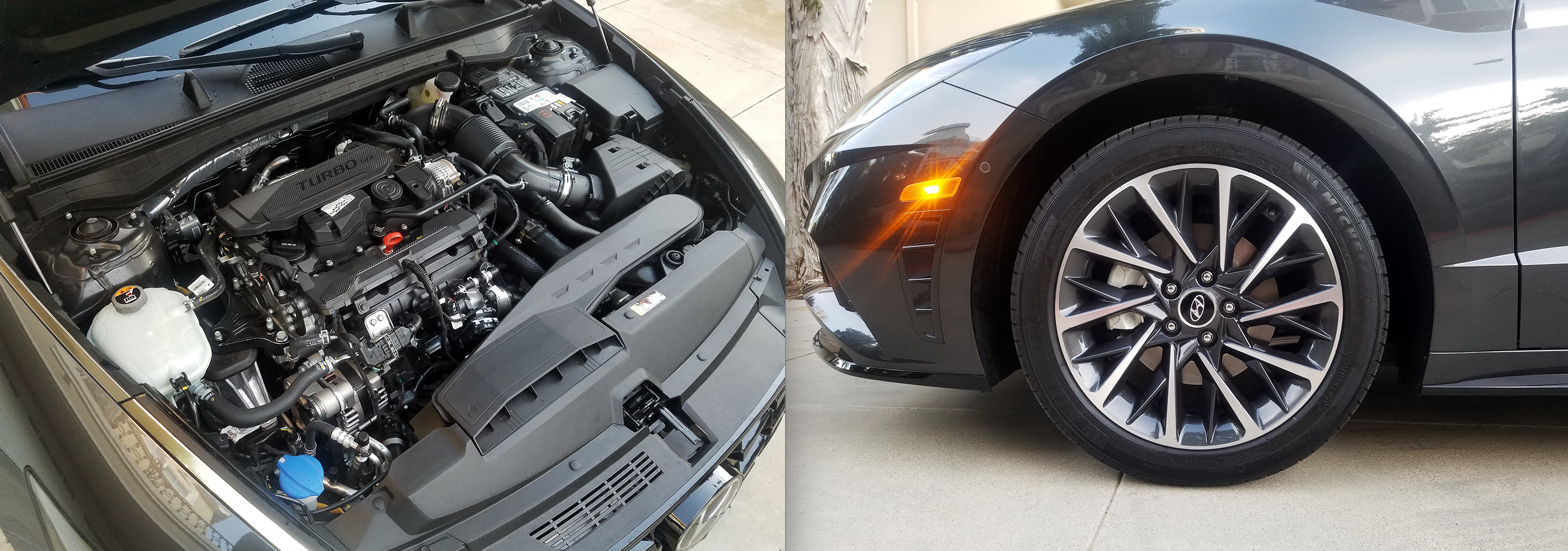
Sonata SEL Plus and Limited models come standard with a turbocharged 1.6-liter 4-cylinder that makes 180 horsepower, as well as 18-inch alloy wheels in place of the 16s and 17s on SE and SEL models.
The Smart Park system can make small steering adjustments, but you’ll need to line the vehicle up with the parking spot the old-fashioned way before you get out of the car. Due at least in part to safety concerns, the vehicle moves quite slowly as it “driverlessly” inches into the parking space. In our view, Smart Park is an impressive technological achievement and a great parlor trick—something to show all the neighbors (from a distance, of course) when you first bring the car home—but we’d guess most owners won’t use it very much once the novelty wears off.
Car Shopping Tips: Test Drive Checklist

The new Sonata’s front and rear view are striking by day…
Standard on Limiteds and available on SEL and SEL Plus is the Hyundai Digital Key system, which uses a smartphone app to enable remote unlocking/locking, starting the vehicle, and other functions through an Android smartphone (sorry, no iPhone compatibility at this point). The system also includes teen-driver features such as geo-fencing and the ability to remotely “revoke” digital-key privileges from junior’s phone.
Another unexpected feature—especially for a mainstream-brand vehicle— is “Sounds of Nature,” an audio-system function that plays pleasant, relaxing ambient sounds. Among the soothing options are Warm Fireplace, Lively Forest, Calm Sea Waves, and Snowy Village. That last one is a bit curious; it’s the sound of crunching footsteps in deep snow, and it’s punctuated at one point by a child’s laugh.
Hyundai calls the new Sonata’s design theme “Sensuous Sportiness,” and we’ll go along with that. For a mainstream midsize family sedan, this is a striking car, with bold shapes and deftly executed design details. Our favorite is the novel headlight treatment, which includes slim LED running lights that appear to be chrome trim when the lights aren’t on.
Meet the 2020 Consumer Guide Best Buys
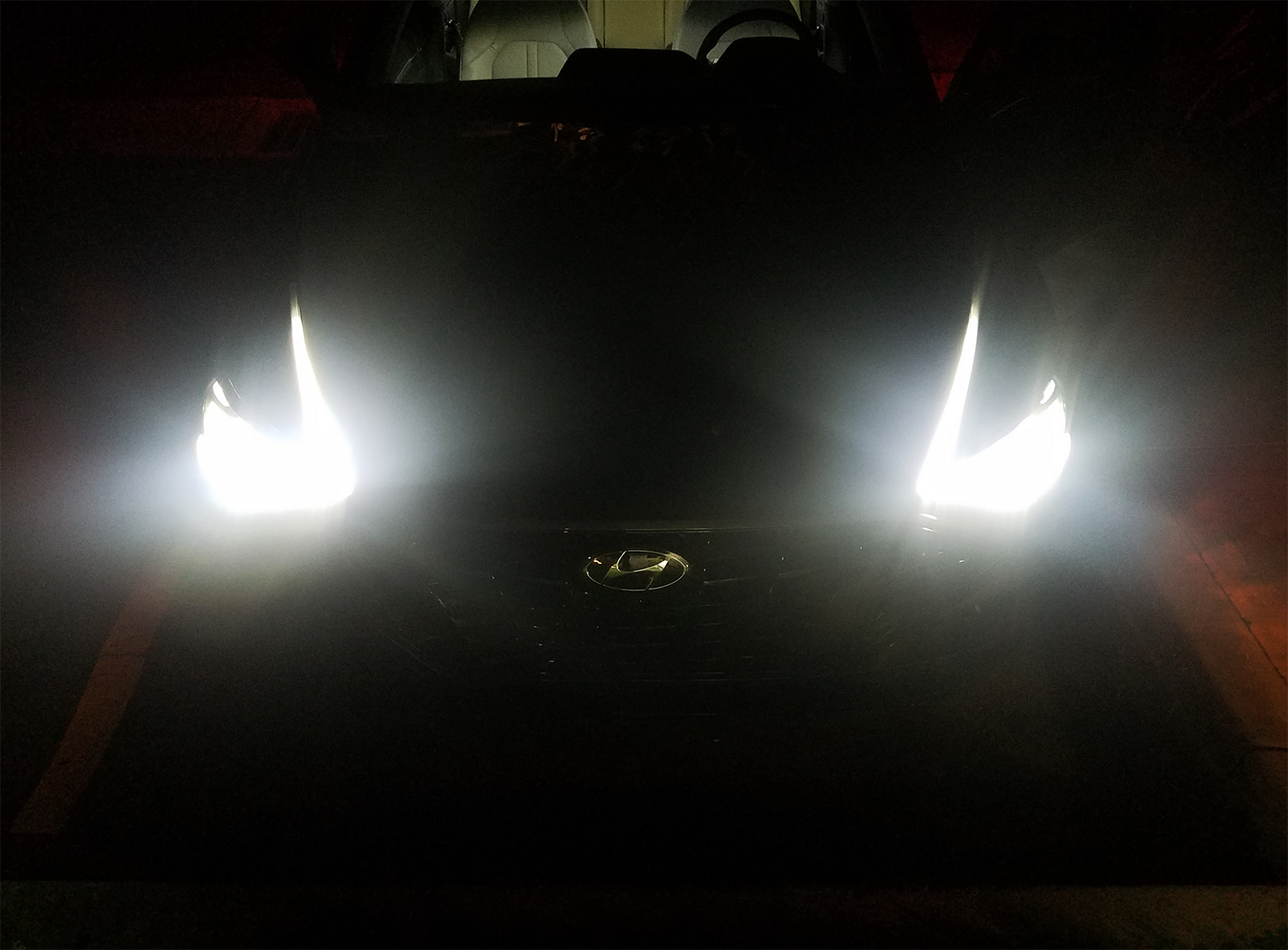
… or night.
The Sonata’s overall control layout and driver ergonomics are excellent. Kudos to Hyundai for sticking with physical buttons for the climate controls… they are much easier to use while driving than touchscreen virtual buttons or touch-sensitive controls. We’re also fans of the clever “flipper paddle” buttons that control the fan speed/direction and the heated and ventilated front seats.
The previous-generation Sonata’s conventional shift lever is replaced with a push-button shifter that is one of the slickest and most natural-feeling such setups we’ve used—it quickly became second nature for us. The buttons fall readily to hand, and the park button is separate from the Reverse, Drive and Neutral buttons, for easy no-look identification. There’s a handy cellphone storage slot in between the center-console cupholders, and the Qi wireless charger is conveniently placed in a cubby bin at the leading edge of the console—as are a 12V port and dual USB ports (one for connectivity, one for charging).
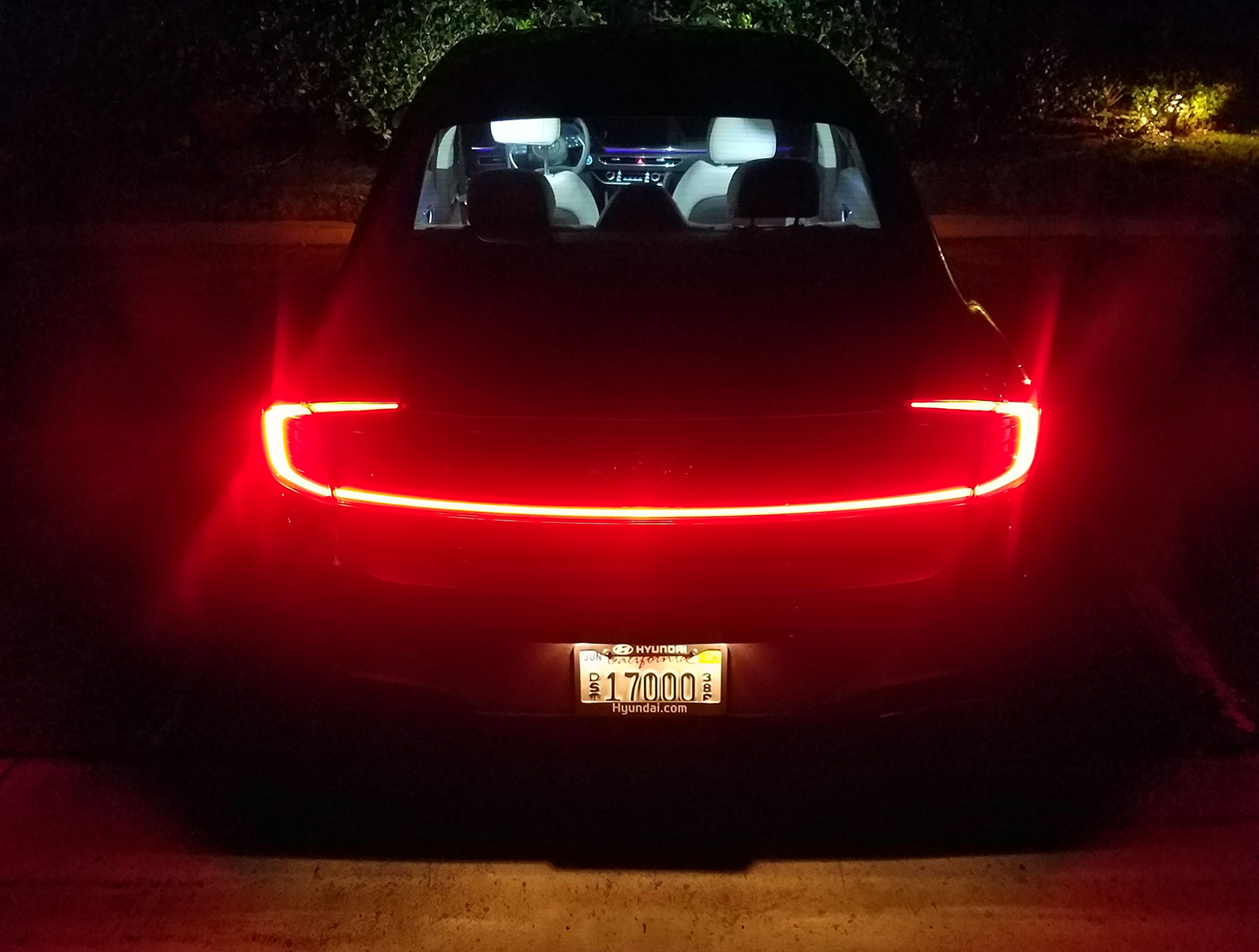
Out back, there’s a slick-looking full-width taillight. Subtle ambient interior lighting (visible here as a slight purple tinge) looks great at night.
A 12.3-inch digital gauge display, borrowed from the excellent 2020 Hyundai Palisade SUV, is standard on SEL Plus and Limited models. On Limiteds, the display includes the Blind View Monitor feature; activating the left or right turn signal prompts a helpful left- or right-side blind-spot camera view to be displayed in the gauge cluster. Other Limited-exclusive features include a leather-wrapped dashboard accent, color head-up display, the aforementioned ventilated front seats (in addition to heated), and front and rear parking sensors.
Standard on Limited and optional on SEL and SEL Plus models is a navigation system with a 10.25” widescreen display. The generously sized touchscreen can display a single, helpfully large navigation-map image, and it can also be split vertically into three separate tiles to show other readouts, such as audio-system info and current weather.
The Sonata’s rear-seat space comes up a bit short of the Honda Accord and Toyota Camry, but average size adults should fit OK. Legroom grows tight behind a tall front seat passenger. The headliner is “scooped out” a bit over the rear seat backs to free up a bit more noggin space for tall folks. Trunk space is competitive at 16.3 cubic feet of capacity. There are convenient pull handles to release the rear seatbacks for more cargo space, though we wished for an inner grab handle on the trunk lid itself, to make it easier to close (the Accord and Camry also omit this detail).
Quibbles aside, the redesigned Hyundai Sonata is a peach of a car for everyday driving. Its gee-whiz available technology features are just icing on the cake.
What is Top Tier Gasoline?
John Biel
Why wouldn’t you buy this car? Certainly, if your individual needs call for a truck or sport-ute, then by all means get one. But for commuting and other day-to-day puttering around, the new Hyundai Sonata is hard to beat.
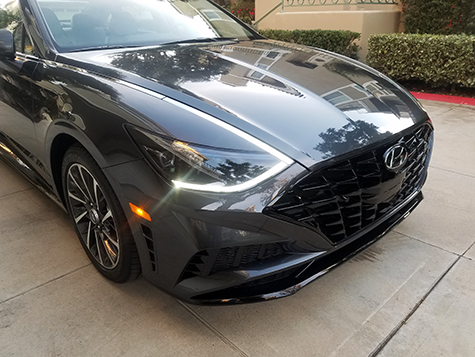
The Sonata’s sleek nose is highlighted by a new rendition of Hyundai’s signature “cascading” grille design.
They did make it attractive, especially in the suggestion of recessed, sculpted bodysides and the way the LED daytime running lights manage to blend in with the bright trim that runs atop the front fenders and loops around the side windows. The interior is pretty well laid out, and controls are direct and convenient to use. Materials in the Limited tested by Consumer Guide may not have been super-premium, but they are luxurious enough for 34 grand.
Good passenger and trunk space are pluses, and there’s a lot of convenience and safety tech stuffed into the Limited—including the remotely controllable Smart Parking Assist. You don’t want to be the di . . . sreputable person who uses it to stuff your Sonata between two parked vehicles, thereby preventing their owners from getting into their rides. But if somebody does it to you, it’s handy to be able to extract the car with the press of a couple buttons.
The new-for-’20 1.6-liter turbocharged engine in CG’s test car felt moderately lively and was, to this driver’s ear, generally quiet. If I had one complaint with the powerteam it was that the push-button shifter felt a little slow to react to requests to switch from, say, Reverse to Drive. As for fuel mileage, it gave me 29.17 mpg after 181.4 miles, 66 percent of that in city-type driving, which is in step with the EPA projections.
Throw in Hyundai’s famously generous warranty, and we return to our original question.
Should I Buy a Car or Crossover?
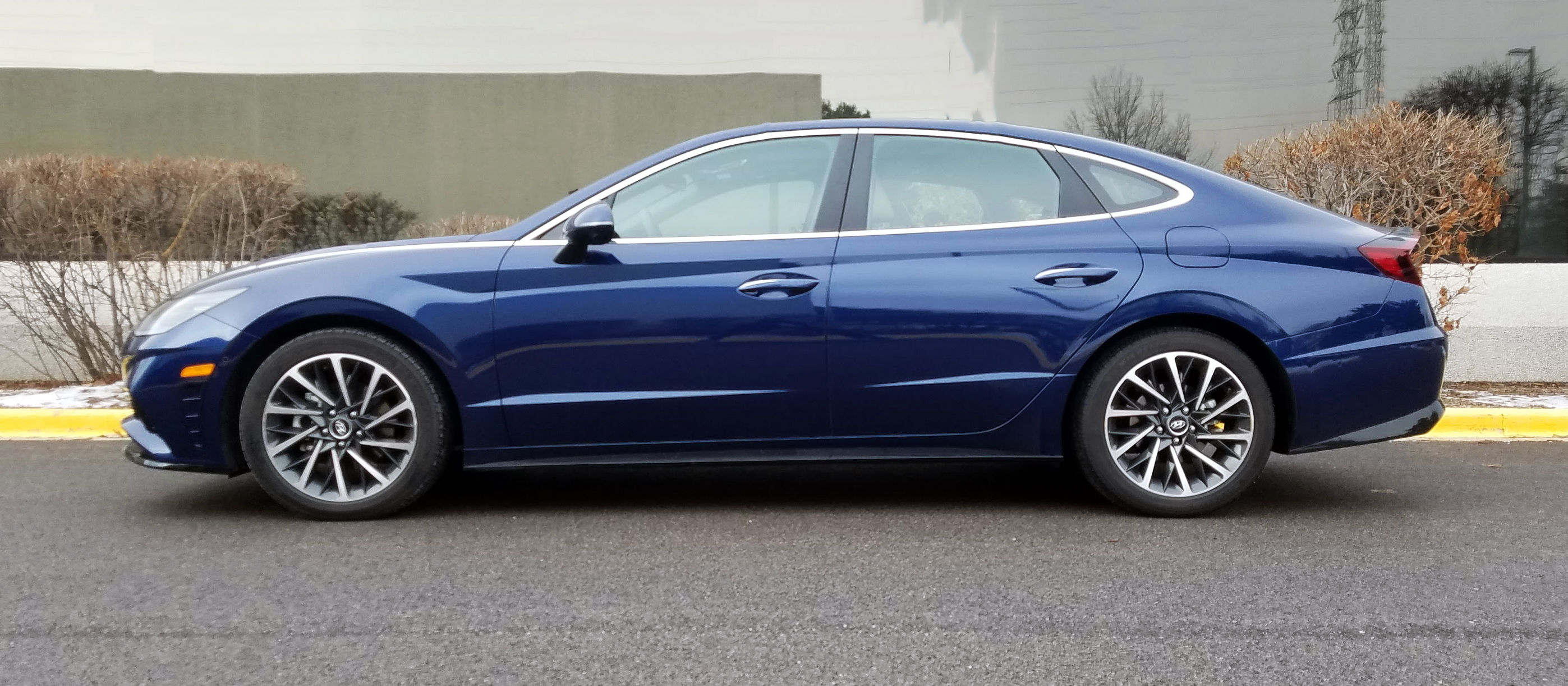
The redesigned-for-2020 Hyundai Sonata’s sleek looks, compelling list of standard and available features, pleasant driving demeanor, and value-for-the-money factor make it a excellent choice in the mainstream midsize-sedan field.
Every episode of the Consumer Guide Car Stuff Podcast
2020 Hyundai Sonata Limited
Gallery
Written by: The Daily Drive staff on May 15, 2020.
